WINTER
Remembering D-Day
This monumental World War II effort marked a collective stand against tyranny. U historians say it still has lessons for us now. p. 22
Supporting Native Students
The U is reducing barriers and expanding programs to help more American Indian students achieve college success. p. 34

Lifesaving Friendship
A bond formed in the U’s Marching Band leads to an ultimate act of kindness. p. 44
Pathway to the Past
Follow along on a tour of some of the U’s oldest buildings and see what campus looked like a century ago. p. 28
University of Utah Magazine
2023
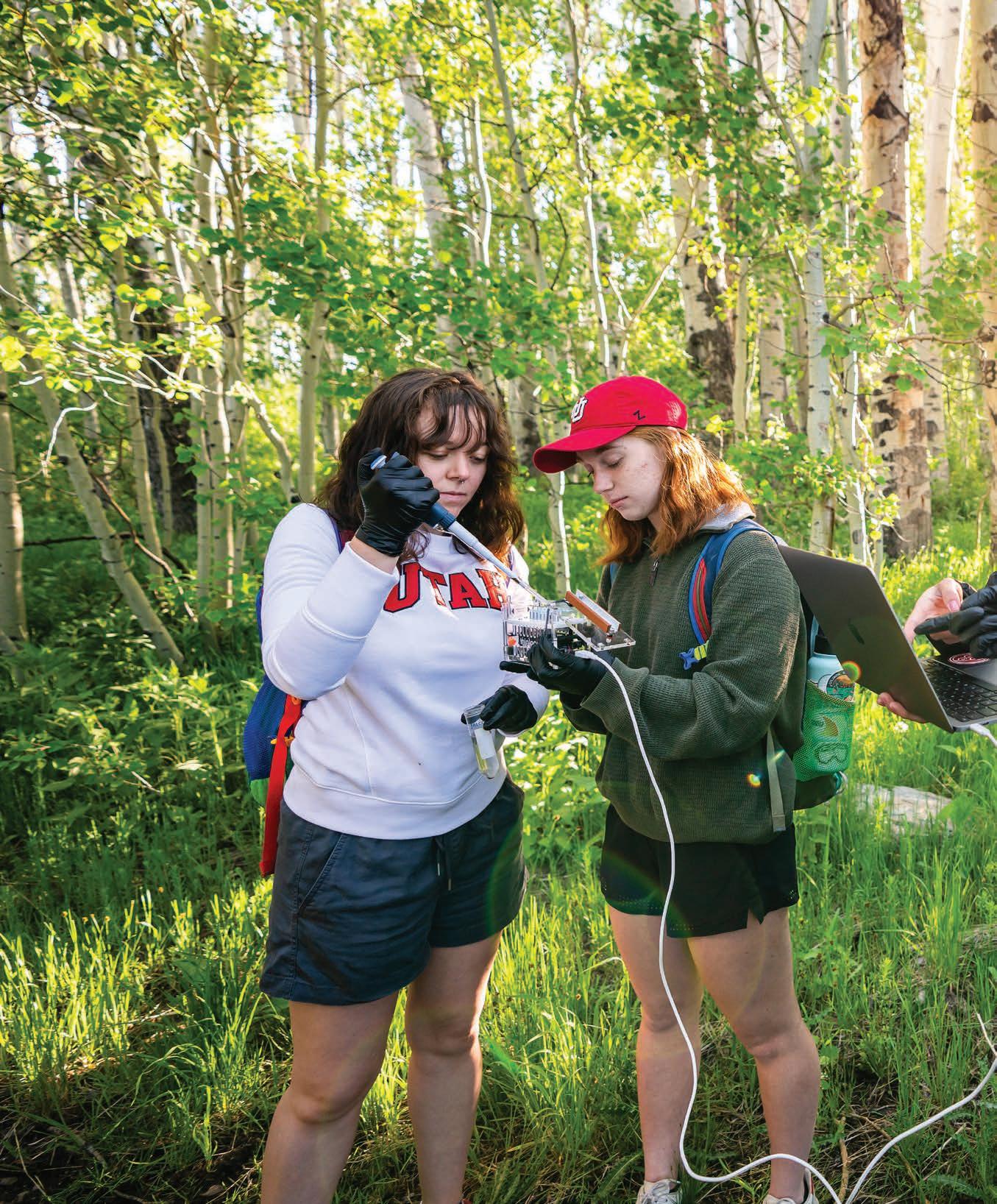
Web Extra Learn more about how we’re making the first year the best year at utahfresh.utah.edu
Utah Fresh
Does this image look familiar? You might have seen it in a commercial on TV, driven past it on a billboard, or scrolled by it on social media. But this is more than just an ad. It’s the latest in the U’s commitment to supporting students from the moment they consider attending through their experiences on campus and even after graduation. We call it Utah Fresh.

“Applying for and starting college is stressful and complex,” says Andrea Thomas BS’88, the U’s new chief experience officer. “So, we decided to boost and organize information and resources for incoming first-year students and focus on making their introductory experiences as stellar as possible.”
But it’s not just a smoother entry process that makes a difference, she adds. We know students who live, work, and tap into communities are more likely to succeed—which is why, for example, we offer living-learning cohorts for groups as varied as pre-law to pre-med and from entrepreneurs to Honors. So, whether it’s doing research in Utah on the effects of climate change—like these students here—or studying at one of our campus partners across the globe, the U is dedicated to making the first year the best year. And that’s Utah Fresh.
PHOTO BY DAVE TITENSOR
WINTER 2023
Volume 32, No. 1
As the U’s 2022-23 American Indian Woman Scholar, Kiyanna Porter raises visibility of Indigenous issues. Hear what she and other members of the U community say we can do to support American Indian students. p. 34

More available at magazine.utah.edu
From Marvel to Bill Maher , U alum Anayat Fakhraie BA’08 has racked up some impressive projects on his TV and film writing resume. He talks about his path from the U to Hollywood, shares some of his favorite things, and tells us what politicos are really like behind the talk-show curtain. Check out the full Q&A at magazine.utah .edu/fakhraie
Have you ever wondered about the dinos in Jurassic Park? U professor and paleontologist Mark Loewen PhD’09 talked to Vanity Fair about the accuracy—or lack thereof—of dinosaur depictions on the big screen. Visit magazine.utah.edu/dino to see the Vanity Fair video, which has more than 3 million views on YouTube.
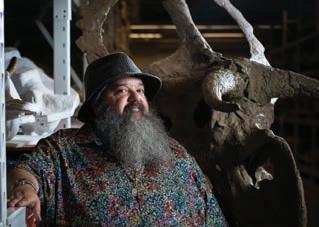
Allied against Tyranny On June 6, 1944, thousands of Allied soldiers crossed the sands of Normandy to fight Nazi Germany. D-Day was a turning point in World War II and marked a collective stand of democracy over dictatorship. As memories of the war begin to fade, the U is preserving the stories and legacy of D-Day.
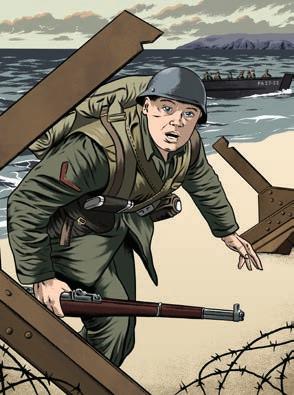
What is Utah Fresh? It’s a new take on the firstyear experience at the U, where students can take part in exciting opportunities right off the bat—like learning abroad, doing real-world research, and joining living-learning communities. Learn more at utahfresh.utah.edu
DEPARTMENTS
100 Years Ago
The U campus is very different today than it was even 10 years ago. But what if you could turn back the clock 100 years? Follow along in these pages as we tour some of the U’s oldest buildings, and meet some notable alums you may have bumped into on campus a century ago.
I Belong Here American Indians face significant barriers to higher education, resulting in fewer degrees among this population than in any other racial or ethnic group. To help close the gap, U leaders are working to expand programs and resources that support Indigenous students on their path to college success.
ON THE COVER
08 09 �� �2 �4 �7
News from the u
Number Community Humans Diagram Stats
�8 44 45 47 48 52
Expert Forever u Faves Ask Class Notes Reflect
22 28 34 FEATURES
WEB EXTRAS
Artist Daniele Simonelli illustrates a map of the U campus and a walking tour of its oldest buildings, from Presidents Circle on the western edge to Fort Douglas in the east.
2 UNIVERSITY OF UTAH MAGAZINE
PHOTO BY DAVE TITENSOR
Schuyler Welch enrolled in the MBC program in person to grow Doxy.me, a telehealth company that boomed during the pandemic.
ENTREPRENEUR A MASTER’S DEGREE ONLINE

OR IN PERSON
AN AFFORDABLE PROGRAM TO GROW YOUR BUSINESS
ECCLES.UTAH.EDU/MBC ENTREPRENEUR IS A VERB. START DOING.
STAFF
Christopher Nelson BS’96 MPA’16 PUBLISHER
J. Melody Murdock EXECUTIVE EDITOR
Seth Bracken EDITOR-IN-CHIEF
Lisa Anderson BA’02 ASSOCIATE EDITOR
David E. Titensor BFA’91 ART DIRECTOR
Marcia C. Dibble SENIOR EDITOR
Dave Meikle BFA’94 MFA’06 SENIOR DESIGNER
Brian Rasmussen BA’80 BUSINESS MANAGER
UMC Digital WEB DESIGN
Pentagram, Austin FEATURE DESIGN
CONTRIBUTORS
Sydney Berkman, Paul Gabrielsen, Elena Gardner, Julie Kiefer, Mattie Mortensen, Lisa Potter, Rebecca Walsh BA’93 MPA’18, Drew Wiseman, Shawn Wood BS’10
PLACE AN AD brian.rasmussen@utah.edu | 801-581-3051
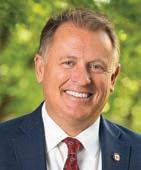
UPDATE ADDRESS giving.utah.edu/updates
CONTACT US magazine@utah.edu | 801-213-1253
75 Fort Douglas Blvd. Salt Lake City, UT 84113
VISIT US ONLINE magazine.utah.edu
UNSUBSCRIBE FROM PRINT
If you prefer reading online and no longer wish to receive a print copy, email uniteupdates@utah.edu
University of Utah Magazine (formerly Continuum) is published three times a year by University Marketing & Communications. Opinions expressed are not necessarily those of the university administration.
© 2023 University of Utah
Higher Ed Needs More Grit

You’ve probably read about the looming demise of higher education. I don’t buy it.
Last fall, the U admitted a record class of first-year students for the third year in row. We’re on track to grow our student body from just under 35,000 to 40,000 over the next five years. As college and university enrollment decreases nationally, we have a plan to become a top 10 public university with unsurpassed societal impact. To do this, we will continue to defy national trends in higher education.
An important aspect of our plan is to focus on grit—the determination and moxie required to excel despite challenges. We enroll students from all walks of life who have shown remarkable grit. Some are third- or fourth-generation college students; others are the first in their family to contemplate college. Many have spent long hours practicing an instrument, learning an art, training for a sport, or mastering a difficult skill. Some
worked through high school to help support their families. Others may be enrolling after raising a family. No matter the circumstance, we welcome all hardworking, resourceful, and dedicated students at the U… and we want more.
Along those lines, last fall the U joined the University Innovation Alliance (UIA), a coalition of 15 public research universities working to increase graduation rates among low-income, first-generation, and students of color. I believe UIA members can break the “this is how we’ve always done things” mold and rethink student engagement, development, and success.
Within the pages of this issue, you’ll find stories of students, faculty, and alums with incredible grit. They are helping us redefine higher education. And you, our alumni and friends, have your own inspiring stories of persevering through challenges. It will no doubt take this kind of grit to become a top 10 public university with unsurpassed societal impact— together, we can get there!
PRESIDENT TAYLOR RANDALL HBA’90
u President’s Perspective ILLUSTRATION BY ERIC HANSON 4 UNIVERSITY OF UTAH MAGAZINE
Reinvigorating Historic Areas
An article about alumni and others helping to revive Japantown in Salt Lake City [“Restoring Historic Japantown,” Summer 2022] became one of the most visited and commented posts ever on our website.
I grew up there! My parents and grandparents ran Sunrise Fish Market and Mihoya Confectionery. It was a grand time of community, struggle, and successful businesses. Everyone up and down the street took care of us. We were forced to move and the buildings were torn down in 1968. It was the center of Japanese and Japanese American entrepreneurship, identity, and contribution to Salt Lake City.
CRAIG NAGASAWA BFA’80 BERKELEY, CA
Health Care Help
The country is facing a critical nursing shortage—and as we reported, the U is here to help by expanding its program by 25 percent [“Nurses Needed,” Fall 2022].
I am a 20+ year registered nurse who currently works full time in the insurance industry. My thoughts to add hope to the nursing shortage is to allow for retired nurses and nurses looking for weekend work to be welcomed back and staff noncritical areas, as long as they have active licenses. This would allow seasoned nurses the gratification to take on patient care in areas where they feel comfortable working.
 NANCY CUNNINGHAM BSN’13, SANDY, UT
NANCY CUNNINGHAM BSN’13, SANDY, UT
Great article and thank you to you all who helped make this happen. I am half Japanese (in Hawaii we say “hapa”). I didn’t even know Salt Lake City had a Japanese street. My grandma’s family had something similar happen in San Francisco. They lost their store and home after being relocated to Minidoka Camp in Idaho during WWII. A tragic time for Japanese Americans, my children were surprised to hear this happened in the U.S. Sadly, some people still feel it didn’t happen.
 ROB NAHOOPII MS’08 PHARMD’06 DRAPER, UT
ROB NAHOOPII MS’08 PHARMD’06 DRAPER, UT
Starstruck
We recently caught up with Claybourne Elder BA’06, who has had roles in Emmy- and Tony Award-winning shows on Broadway and TV [“Stage and Screen,” Fall 2022].

Oh, I’ve been enjoying Gilded Age! I didn’t know he was one of “us” [a U alum]! This was so fun to read. Very proud of his success.
SOCIAL SPOTLIGHT
To help celebrate the 25th anniversary of the Veterans Day Commemoration on campus, we wrapped the iconic Block U—and it went viral online. An Instagram post with this photo quickly became one of our most popular of all time, reaching tens of thousands. We’re grateful to all who serve.

Comments u We want to hear from you! Join the discussion at magazine .utah.edu or email us at magazine@ utah edu. Comments may be edited for length and clarity.
HOLLY ABEL BMU’03, FARMINGTON, UT
WINTER 2023 5
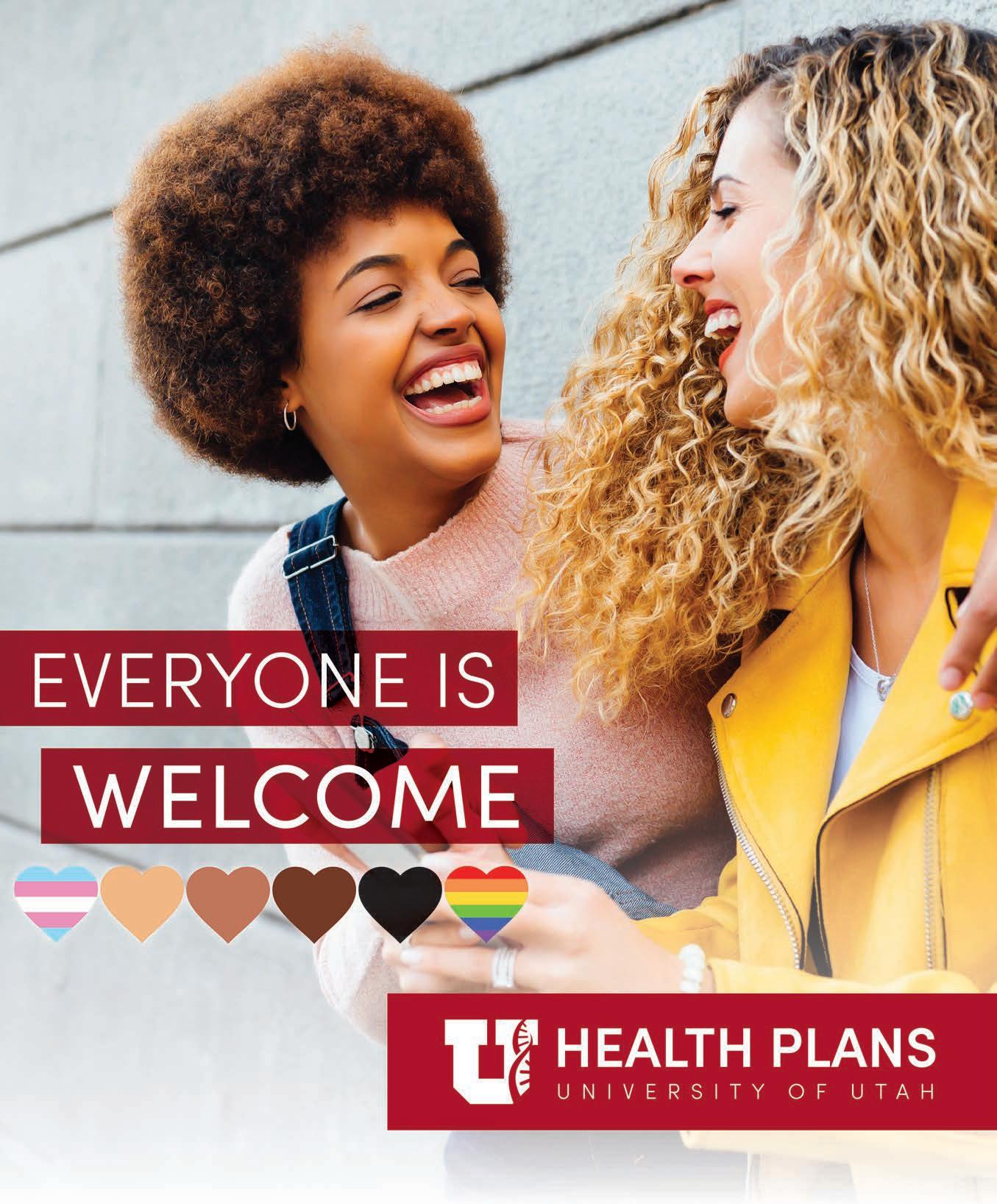
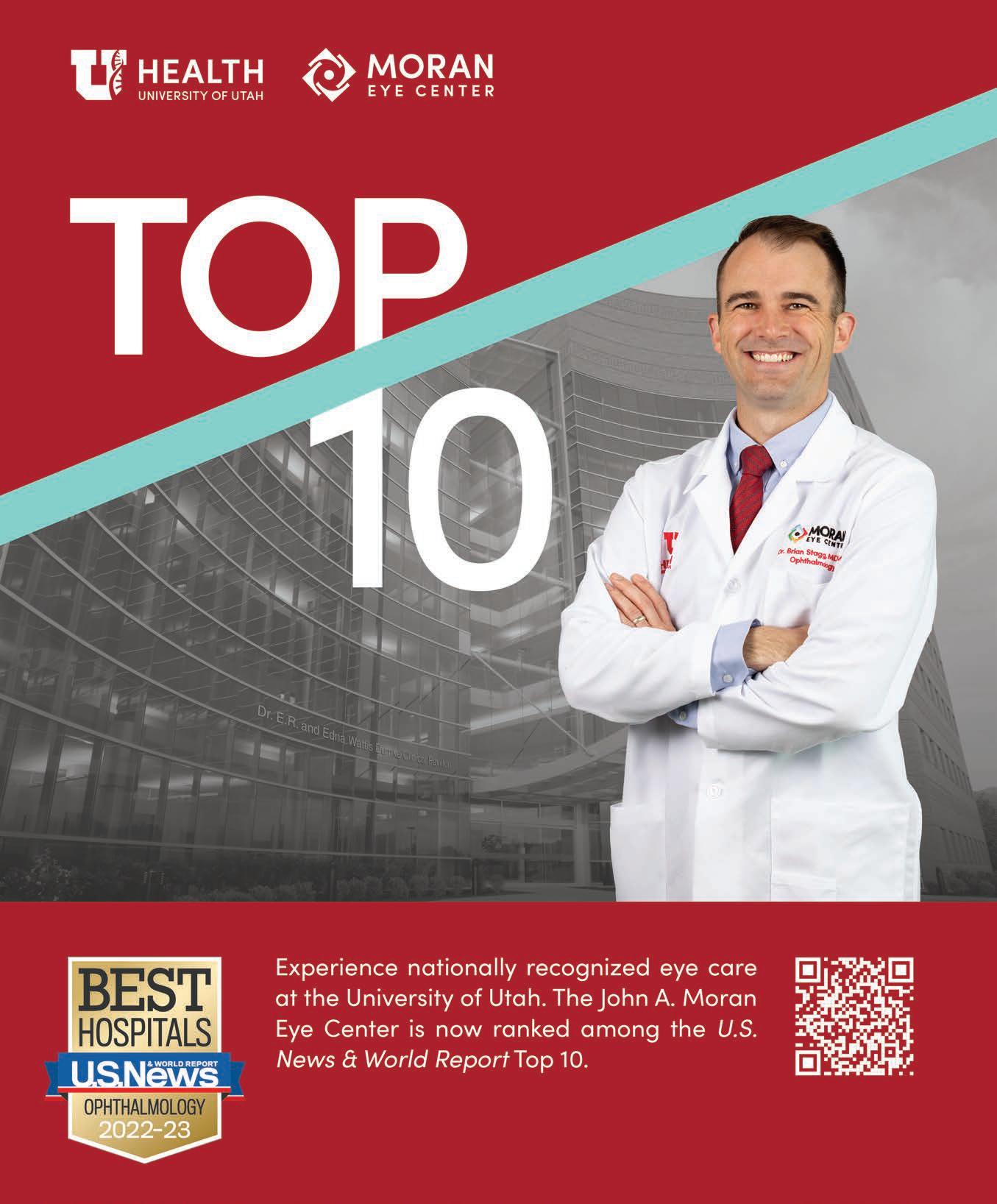
Andrea Thomas BS’88 is the U’s chief experience officer, a new role that’s rather unique in higher education. Thomas is working to address issues students face with a large and somewhat decentralized campus to understand and improve the experience from recruitment to graduation and beyond for all students. With an MBA and an EdD in higher education management, Thomas was formerly assistant dean of undergraduate studies at the David Eccles School of Business.
Taking on Climate Challenges

A new center at the U aims to tackle environmental woes
The new Wilkes Center for Climate Science and Policy has lofty goals—and it’s already getting started. Just months after announcing its inception last August, center leadership announced a $1.5 million international prize to recognize and support the world’s most promising ideas that address the impacts of climate change.
“The Wilkes Center for Climate Science and Policy is a 21st-century interdisciplinary model— one that will make it so much easier to conduct high-impact research and make science-based recommendations to decision-makers,” says Peter Trapa, dean of the College of Science, where the center is located. It was launched through a $20 million gift from the Red Crow Foundation, Marie and Clay Wilkes’ philanthropic organization.
Clay Wilkes, a Utah businessman, technologist, and environmentalist, proposed creating the center last year to U President Taylor Randall HBA’90. With support from the governor and other state officials, the U quickly moved to make it a reality.
“Climate change is one of two or three issues that

are absolutely critical to humanity,” Wilkes says. “With this new center, the University of Utah is leading by example, and we challenge every other university within the state and beyond to do likewise.”

Wilkes and U officials note that Utah, by dint of its geography and ecology, is a living laboratory for the deleterious impacts of climate change and the potential for innovative solutions.
The award was announced during U.S. Rep. John Curtis’ Conservative Climate Summit, held on the U campus last fall. The solutions-focused prize is one of the largest university-affiliated climate awards in the world. Financial co-sponsors of the prize include Zions Bank, the Cumming Foundation, the Huntsman Foundation, Clay and Marie Wilkes, Finley Resources, Huntsman Corporation, and Chevron.
“We’re proud to administer this exciting new prize here at the University of Utah,” says Randall. “Our faculty and student researchers are singularly focused on finding creative and cutting-edge solutions to the urgent problems facing our society. Climate change is top of mind on our campus.”
Fall 2022 saw the most diverse, most prepared, and largest group ever of incoming freshmen to the U. Some 5,520 enrollees with an average GPA of 3.66 marked a three percent growth of freshmen, resulting in a total enrollment of 34,734 students in undergraduate and graduate studies. Additional records were set for the largest number of incoming female-identifying students and freshmen of color.
Bestselling author and Harvard professor Arthur Brooks has been named the Kem C. Gardner Policy Institute’s first visiting Impact Scholar. He will spend several days each semester at the Gardner Institute over the next three years, giving guest lectures, participating in roundtable discussions with state and local officials, and consulting with university and community leaders.

NEWS ROUNDUP
ILLUSTRATION BY JON KRAUSE 8 UNIVERSITY OF UTAH MAGAZINE
A Growing Program
Ties between the Beehive State and the Pacific Islands are undeniable. In fact, Utah has the largest number of residents of Pacific Island descent per capita in the continental U.S. So, it’s no wonder that the U is home to a thriving Pacific Islands Studies program. And it’s about to get even stronger thanks to a new $1 million grant from the Mellon Foundation, says Maile Arvin, the program’s director. That’s on top of a $600,000 grant
the foundation awarded the U in 2018. “Many of our students say that our classes are the first time they ever learned about their own histories and cultures at school,” notes Arvin. With the new funding, the U’s School for Cultural and Social Transformation plans to add a graduate certificate, create a Center for Pasifika and Indigenous Knowledges, and launch an International Network of Trans-Indigenous Scholars.

WINTER 2023 9
Groundbreaking Development
A new home for the Spencer Fox Eccles School of Medicine is the next evolution in providing top-tier care, education, and research
University of Utah Health is the only academic medical center in the Mountain West, providing high quality patient care for nearly 10 percent of the geographic area of the continental United States. The construction of the medical education building is expected to drive the most critical evolution in the medical school’s history and will be used across education, research, and clinical care.
New Provost Named
The U broke ground last fall on the new home for the Spencer Fox Eccles School of Medicine. The $185 million facility has been made possible, in part, by funds from a landmark gift of $110 million from the George S. and Dolores Doré Eccles Foundation and the Nora Eccles Treadwell Foundation. The gift provides support for not only the building but also medical education programs and cardiovascular research.
The 185,000-square-foot building will become the hub of the

U’s nationally recognized health sciences campus.
“The incredible impact of the University of Utah’s health sciences program in education, research, and care across the Intermountain West is a source of great pride for the entire state,” says Utah Governor Spencer J. Cox. “This new facility will make a major difference in our ability to address the growing need for top-tier doctors in the state, especially in our rural areas.”
“I have long believed that no state or region can become truly great without a world-class medical center at its nucleus,” says Spencer F. Eccles BS’56, namesake of the school and chairman and CEO of both the George S. and Dolores Doré Eccles Foundation and the Nora Eccles Treadwell Foundation. “We hope this seminal grant—the largest ever awarded by our foundations—will help ensure the university not only provides the highest quality medical education for the doctors who serve Utah and the entire Intermountain West, but also furthers the excellence of health care for all our citizens and impacts the future of medicine through its groundbreaking research.”
PICTURE
The U has a new provost and senior vice president for academic affairs. In this role, Mitzi M. Montoya is responsible for setting the academic vision and strategic focus of the U.

“I am honored and thrilled to join the outstanding faculty of the U and move to the beautiful state of Utah. The steady trajectory of the university is impressive, and I am inspired by President Randall’s bold vision for the future,” says Montoya. “I look forward to working together with the entire leadership team to build on the momentum and help the U achieve its goals.”
Montoya brings strong leadership skills to the position at the U, including experience gained as dean of the Anderson School of Management at The University of New Mexico; dean of the College of Business at Oregon State University; and vice president and university dean of entrepreneurship and innovation, as well as dean of the College of Technology & Innovation, at Arizona State University. Montoya is a professor of marketing and received her doctorate from Michigan State University.
Empty COVID-19 vaccine vials, clean medical waste, and other personal mementos make up the new art installation recently unveiled at University of Utah Hospital. The piece, titled Rise Up, was born from Project Art Heals Utah, which was created to commemorate experiences and losses related to the COVID-19 pandemic.
The work is a collaboration between U of U Health physician Emily Hagn MD’06 and artist Heidi Calega, with special thanks to U of U Health, the Spencer S. Eccles Health Sciences Library, and the Salt Lake County Health Department.

Montoya follows Martell Teasley, who had served as the U’s interim senior vice president for academic affairs since January 2022. He led the academic enterprise through a presidential transition and the continued unwinding of the COVID-19 pandemic.
“I welcome Dr. Montoya to Utah and look forward to supporting and working with her in the years ahead,” says Teasley. “We have much to accomplish to become a model public university, and I want to make sure that during this transition and over the longer-term horizon, we don’t miss a beat.”
u Campus News
10 UNIVERSITY OF UTAH MAGAZINE
Wayne County
Training Utah’s Rural Nurses

There’s not a typical day in rural nursing. “You never quite know what’s coming,” says Josie Moosman, a U College of Nursing student and nurse at the Wayne Community Health Center in Bicknell, Utah, population 330. In one shift, she may do a well-baby checkup, arrange a patient’s end-of-life care plan, cover ambulance rides, or prepare an emergency patient for a helicopter transfer. “It’s very dynamic,” she notes. “We really do work at the top of our licensure.”
Rural populations are significantly impacted by health disparity, experiencing higher rates of disease and disability and lower life expectancy than their urban counterparts. Registered nurses who work in rural communities play a paramount role in caring for these underserved individuals and families.
However, it’s not easy to recruit and retain rural RNs. There’s a knowledge and skill gap related to rural health care, and limited pathways for students to enter the field of rural nursing.
To address the growing health care needs of Utah’s rural populations, the U’s College of Nursing obtained a Nurse Education, Practice, Quality, and Retention (NEPQR) grant. NEPQR provides online training modules, scholarships, and travel funding for student nurses to gain experience in rural clinics like those of the Wayne Community Health Center. In turn, the center’s RNs receive training and resources.
“We want nurses to be prepared for rural nursing and want to work in rural settings,” says Brenda Luther MS’99 PhD’10, a professor of nursing at the U.
For her part, Moosman says, “It’s extremely rewarding to be a nurse in rural health care. You’re treating people you know and you love.” She is continuing her nursing education in the U’s Doctor of Nursing Practice Program—allowing her to provide even more community support as a nurse practitioner.
JACQUELINE SCHEIDER
Web Extra Watch Moosman in “A Day in the Life of a Rural Nurse” at magazine.utah.edu/rural
PHOTO BY HANNAH BURDETT
SPOTLIGHT
WINTER 2023 11
As the state’s flagship university, the U is committed to improving the lives of all Utahns. These stories highlight how we’re making an impact in every county.
Tayla Chiang
First-Generation College Student, Pre-Med
I fell in love with medicine at a young age. I’ve always had the desire to help people. In high school, I started looking for ways to get involved, like volunteering at Primary Children’s Hospital. One summer, I emailed a bunch of professors at the U and asked, “Can I do research in your lab?” Someone got back to me and said yes.

Then I found the PathMaker program at Huntsman Cancer Institute, where you get to live on campus, work in a research lab, and shadow doctors. I loved seeing how they made patients feel safe at a time when they’re so vulnerable.
The mentors I met were so supportive and made me believe I could pursue medicine. I knew I wanted to come to the U, but I couldn’t really afford to go to college if I didn’t get a scholarship. One of my mentors told me to apply for the Larry H. and Gail Miller Enrichment Scholarship, which covers tuition, housing, books, and fees. When I heard I received it, it felt like a dream. The scholarship has allowed me to focus on school instead of worrying about the cost of tuition. I’m able to get involved on campus and explore college life.
I’m really proud of being a first-generation college student. I love that I’m different compared to other people, because that’s what makes me, me. When I become a doctor, I really want to teach students and people of color. I would love to help the younger generation believe they can pursue medicine. I want to be that person who inspires other people.
Humans 12 UNIVERSITY OF UTAH MAGAZINE
Campus Home

Two new developments on and near campus will bring hundreds of additional beds

More than 1,300 units are slated to open at the U in the next two years in just two new developments. Last September, the U broke ground on the Impact and Prosperity Epicenter, which will provide student housing along with office space for the Center for Business, Health, and Prosperity and the Sorenson Impact Center. The newest addition to the David Eccles School of Business will be 284,808 square feet and provide 775 beds. The $114 million project set to open August 2024 is made possible by the generous support of anchor donations from Jim Sorenson and Robert and Lynette Gay.
“The Epicenter is a living-learning space that will provide an unparalleled opportunity to equip the next generation of leaders with social purpose and sharpen the world’s understanding of impact investing and approaches to sustainable economic development,” says Jim Sorenson.
Bob and Lynette Gay add: “Building on a mission of unifying the resources of business and public health, we believe the Epicenter will become a cutting-edge, student-led deliverer of growth, hope, and prosperity to today’s global community.”
And last May, construction on the new Ivory University House began. The four-building, 552-unit apartment complex is a private partnership with the Clark and Christine Ivory Foundation and The Church of Jesus Christ of Latter-day Saints. The first building will be completed in the summer of 2023. All net proceeds from this project will be dedicated to students for scholarships, housing stipends, and internships.
“We are taking a $24 million investment and producing an annuity that will likely generate more than $1 billion in impact over 99 years,” says Clark Ivory BA’88. “This is the future financial model for supporting higher education, and we are grateful to The Church of Jesus Christ of Latter-day Saints for making this possible with our ground lease of this prime property adjacent to the University of Utah.”
PHOTO BY RANDYL NIELSON
WINTER 2023 13
Helping others believe they can pursue medicine inspires Chiang. Share what inspires you at love.utah.edu.
IN 2020, UTAH’S COMPUTER SCIENCE WORKFORCE GENERATED
63,210 JOBS
$89,500 AVERAGE WAGE SOME OF THE STATE’S HIGHEST WAGES FOR WOMEN AND PEOPLE OF COLOR
Silicon School
Utah’s reputation as a tech hub is thanks in no small part to the computer science innovations coming from the U—aka one of the four universities that helped birth the Internet. As the state’s tech industry booms, the nationally ranked Kahlert School of Computing is matching pace to provide more graduates for
the workforce. The fast-growing school is about to hit lightning speed thanks to two major donations: $15 million from the Kahlert Foundation and a $15 million lead gift from John and Marcia Price for a new computer science building. This page provides a look at the School of Computing’s major impact on Utah’s tech industry.
AN ESTIMATED
3,200 S TUDENTS ENROLLED AFTER NEW BUILDING OPENS
571 COMPUTER SCIENCE GRADUATES IN 2020

ALMOST
3 in 1 FIRST-YEAR ENGINEERING STUDENTS MAJOR IN COMPUTER SCIENCE
SOURCE: THE U’S OFFICE OF BUDGET & INSTITUTIONAL ANALYSIS AND THE UTAH’S ENGINEERING AND COMPUTER SCIENCE WORKFORCE REPORT FROM THE KEM C. GARDNER POLICY INSTITUTE
14 UNIVERSITY OF UTAH MAGAZINE
Boosting Safety’s Presence
A new building for the University Department of Public Safety is just one of many recent improvements
Whenever former University Police Detective Heather Sturzenegger met with a victim-survivor, she’d haul the office couch and lamps into Public Safety’s sole questioning room in an attempt to make the space more comfortable.
A new $14.5 million, 25,000-square-foot building that opened last November means that furniture shuffle is no longer necessary. “It makes a huge difference,” says Sturzenegger— who was recently made chief of staff and helps oversee external public safety agencies and coordinates resources.

After nearly 60 years of using a repurposed World War II Army barracks as its operations headquarters, the department and its visitors will now benefit from the state-of-the-art facility designed to foster increased collaboration between the community and the department.
And the new building isn’t the only major improvement. The department has also established a victim advocate program, a student ambassador program, and dedicated personnel to work with hospital staff and security teams. Additionally, with 94 percent turnover since 2019, recruitment has focused on hiring more women and officers of color to be representative of the community they serve.
Kimberly Barnett BS’99 MPA’04 was recently
named the new deputy chief safety officer for support services. And a national search is underway to fill a new deputy chief safety officer for police services position.
University Public Safety is training officers to understand mental health challenges to help them better assess situations and react with more de-escalating options. Safety leadership has also implemented a new policy to change the language of policing, and officers will no longer say these three things:
• There’s nothing we can do.
• Why did you wait to report this crime?
• What do you want me to do?
Chief Safety Officer Keith Squires, the former head of the Utah Department of Public Safety, is overseeing the implementation of these and many other updates to the department. Prior to working at the U, Squires was tasked with reviewing and evaluating the department’s actions following Lauren McCluskey’s murder by a man she had briefly dated in October 2018.
“This is a transformational time,” says Squires. “I am honored to continue leading this vision and creating a culture of safety for everyone at the U.”
For an overview of more improvements to university safety, visit magazine.utah.edu/ safety
BY THE NUMBERS
For two decades, the Larry H. and Gail Miller Enrichment Scholarship has been helping students from groups underrepresented in higher education and those who are first in their families to attend college. It typically awards full tuition and fees, on-campus room and board, and a textbook allowance. Here are some highlights of its impact.
230 students
84% graduation rate
20
41 current students
years in existence
Campus News u
158 graduates WINTER 2023 15
Celebrating 50 Years of Title IX
A scholarship for a local tennis star was the first awarded to a woman student-athlete at the U
At the time, Jane Stratton didn’t realize she was making history. There was no fanfare and no press conference when the tennis star became the first woman to ever receive an athletics scholarship from the U.

It was the mid-1970s, and Title IX, the law prohibiting sex-based discrimination in federally funded education programs, was still in its infancy. The historic scholarship to Stratton came about after a conversation between Irv Stratton, Jane’s father, and then-Utah Athletics Director Bud Jack about scholarships. His daughter, after all, certainly had the credentials—the Highland High graduate was ranked No. 1 in the nation in doubles and fifth in singles.
“I don’t know why Jane doesn’t get a scholarship, because she has accomplished way more than any of the men,” Irv said to Jack. He agreed with the reasoning, and the tennis star was given a scholarship.
Following collegiate success, Stratton turned pro and went on to reach the Wimbledon quarterfinals twice.
Other women’s sports teams incrementally became part of Utah’s Athletics department as scholarship programs when funds became available to elevate them to sufficient levels. The programs include basketball (1974); volleyball (1975); gymnastics, skiing, and softball (1976); cross country/track (1981); swimming and diving (1982); soccer (1995); and beach volleyball (2017). In 2020-21, the university had 229 female athletes. That includes 192 on full or partial scholarships.

“Significant gains have been made, but it’s important, as we reflect on the past 50 years, that we remain mindful of the work that remains ahead of us to enhance and improve opportunities for women in sports,” says Mark Harlan, U Athletics director.
This article was originally published as part of a series reflecting on the 50 years since Title IX was first enacted in 1972. To read the other pieces, visit magazine .utah.edu/titleix.
SPORTS BRIEFS
For the second year in a row, the U took the Pac-12 championship and went on to the Rose Bowl. In a matchup between two top 15ranked teams, the No. 11 Penn State Nittany Lions ultimately came out on top, defeating the No. 8 Utah Football team 35-21. The Utes put up a strong fight, finishing the game with 391 yards of total offense, including 207 passing yards and 184 on the ground. However, it was the Nittany Lions’ ability to make chunk plays, averaging 8.3 yards per play on offense and 17.4 yards per completion, that proved to be the deciding factor. In addition to the U team’s impressive performance on the field, U Alumni partnered with Penn State alumni to volunteer at the Los Angeles Regional Food Bank.

In 2022, for the fifth year in a row, at least 93 percent of student-athletes at the U graduated within six years of enrolling. The U is tied for the fourth-highest figure among Power Five public institutions and ties for the sixth-highest score among all institutions at the Power Five level.
Cross country runners Emily Venters and Simone Plourde were named to the All-Pac-12 First Team last fall. Venters, who was also named the Pac12 Scholar-Athlete of the Year, finished second at the Pac-12 Championships, and Plourde came in fifth.

A new Runnin’ Ute and Red Rocks Express is shuttling fans from the Guardsman Way Tailgate Lot and the Broadcast Center Lot on Wasatch Drive for all home men’s basketball games and women’s gymnastics meets. The free service begins about 90 minutes before each scheduled event start and runs as demand warrants, until after each event ends.
In a visit to the Magnolia State, the U women’s basketball team added yet another record to the books in a historic victory over Mississippi Valley. Led by top scorer Alissa Pili, the Utes registered a 109-42 win to secure the largest score differential ever seen in a road game.
u Athletics News
PHOTO COURTESY J. WILLARD MARRIOTT LIBRARY
16 UNIVERSITY OF UTAH MAGAZINE
Small Town Roots, Big Talent
Kennady “Lightning” McQueen has basketball in her blood. After all, her mother, Melanee Brooks McQueen BS’91, helped the U women’s basketball team win the WAC tournament in 1991. And although the younger McQueen had 25 D1 offers, the three-time all-state pick, Utah Gatorade Player of the Year, and Deseret News Ms. Basketball chose the U.
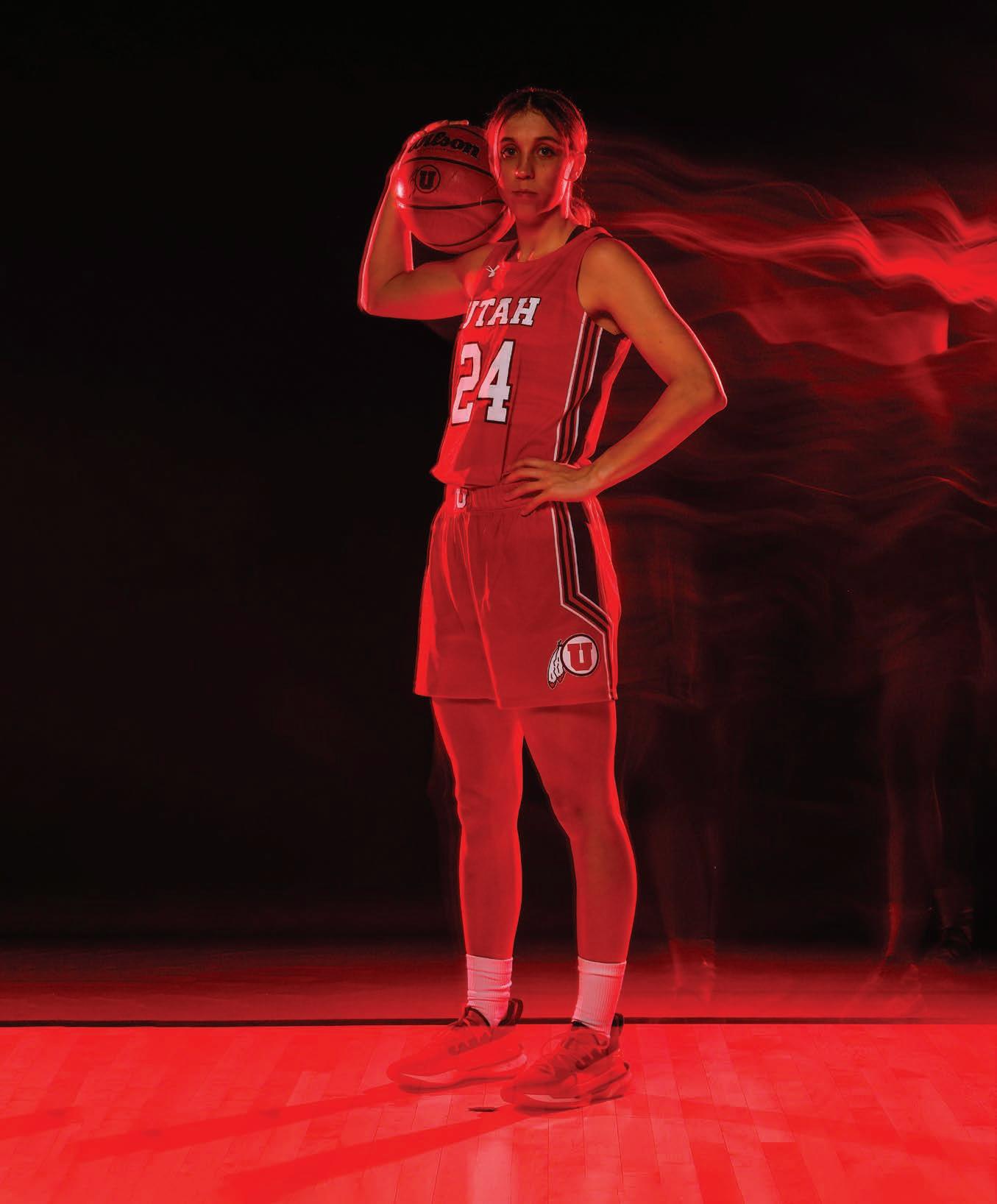
“I fell in love with basketball at a young age and knew my dream was to follow in my mother’s footsteps,” says Kennady McQueen, who honed her skills through programs like the Nike Elite Youth Basketball League, where she was coached by legendary U basketball star Keith Van Horn ex’97.
Her family members have become regulars at home games, with as many as 20 or 30 watching from the stands as she helped the U start the season with a 14-game winning streak and climb the ranks nationally. “We have a goal of making a run in the NCAA tournament, specifically the Sweet 16,” she adds. “That’s what matters to me and the team at the end of the day.”
HOMETOWN Henefer, Utah
YEAR IN SCHOOL
Junior academically, sophomore on the court
MAJOR Kinesiology POSITION Guard
2021-22 SEASON
Averaged 23.5 minutes, 9.6 points, 3.7 rebounds, and 1.2 assists per game
MORE THAN THE GAME
Named to the Pac-12 Academic Honor Roll
THREE-POINT QUEEN
Last season, ranked first in the Pac-12 and eighth nationally in three-point field goal percentage, making 44.2 percent of her threes
DEFENSIVE POWERHOUSE
In 2021-22, led the team in steals with 33
FAVORITE FLICK
The Lorax
PODCASTS IN HER QUEUE
Motivational speeches and murder mysteries
PUMP-UP MUSIC SZA, Bazzi, Noah Kahan, Lauv, and occasional rap
MANTRA
TO LIVE BY Dreams don’t work unless you do
FAVORITE RESTAURANT
Larry’s Spring Chicken Inn (Morgan, UT)
WINTER 2023 17
Web Extra Find out how she got her nickname and watch her Pac-12 Network interview at magazine.utah.edu/mcqueen
Dinos on the Big Scream
Have you ever wondered if Jurassic Park is realistic? Jeff Goldblum’s sexual magnetism is most certainly accurate, but what of the dinosaurs?
Enter Mark Loewen PhD’09, a paleontologist at the Natural History Museum of Utah and associate professor in the Department of Geology and Geophysics at the U. In June, Loewen critiqued the accuracy of Hollywood’s depictions of dinosaurs for Vanity Fair in a video that has racked up more than 3 million views on YouTube.
“I love these movies—some of them are horrible, but I still love them,” says Loewen. And he’s uniquely suited for the job. In the early 2000s, he and his mentor Scott Sampson created a class called World of Dinosaurs, GEO 1040, where students watch movie clips and analyze the veracity of dino representation. He expanded this idea to create Science and Cinema, GEO 1000, a non-majors class that
analyzes science in movies. By studying the dinosaurs, natural disasters, and science fiction presented onscreen, students learn fundamentals while having fun celebrating—or berating—various motion pictures.
“I view myself as an evangelist for science,” says Loewen. “Movies are a sneaky way of showing students at the U how cool these concepts are. I mean, isn’t this one of the most awesome classes you could take? Get a credit to watch movies and learn about the science.”
An alum of the Science of Cinema class now works at Vanity Fair and recommended Loewen for the video series, which coincided with the release of Jurassic World Dominion in 2022. A professional film crew shot his interview in the paleontology collections at the museum. If you watch the video closely, you can see specimens of dinosaurs that Loewen himself has discovered and named.
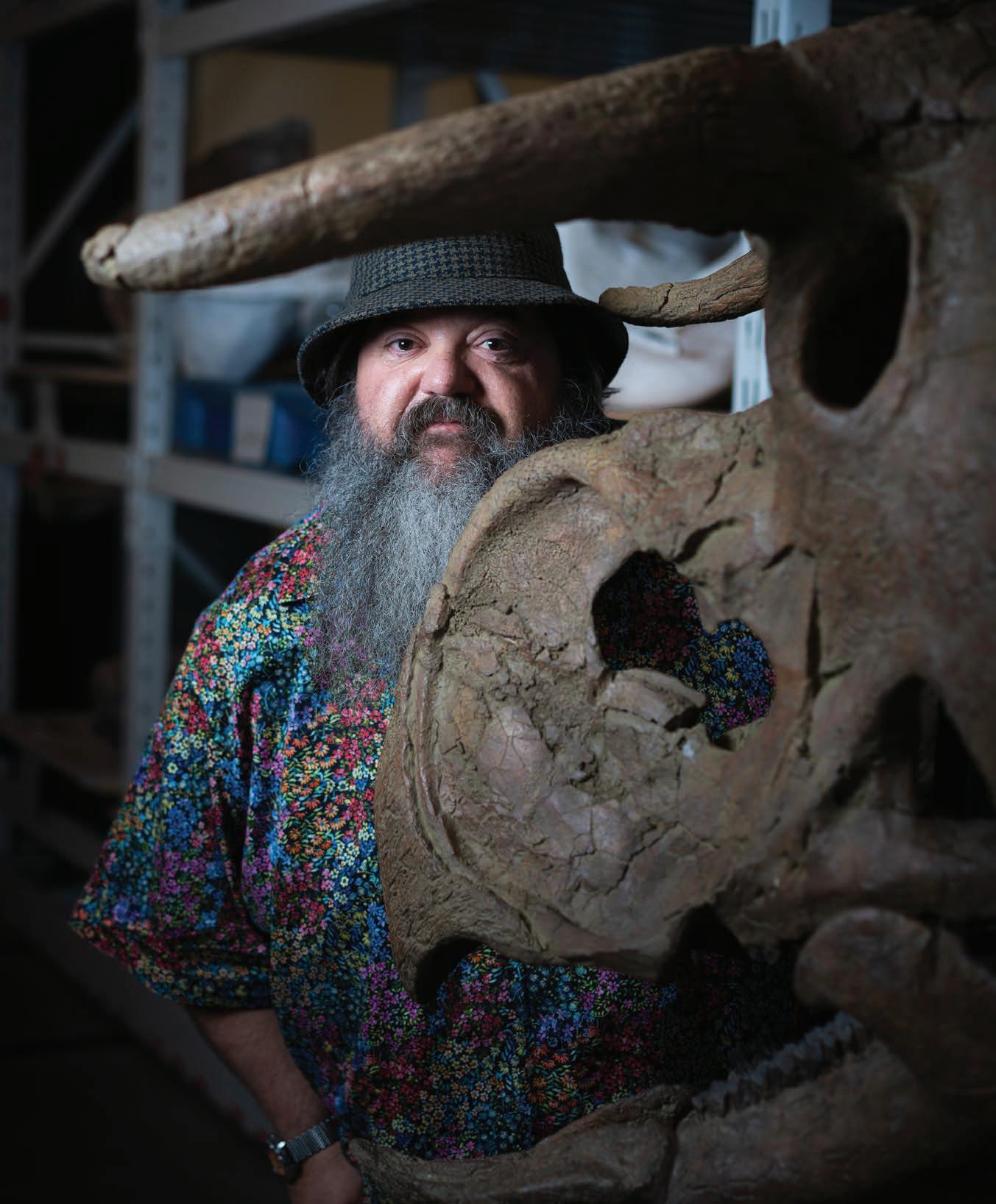
PHOTO BY DAVE TITENSOR 18 UNIVERSITY OF UTAH MAGAZINE
Web Extra Watch the Vanity Fair video at magazine.utah.edu/dino
Study Suggests Genes May Play a Major Role in Stillbirth
Nearly 21,000 babies in the United States are stillborn each year—and doctors often can’t explain why. But newly published research may shed some light on one of the causes.
The study is the first to show that stillbirth can be inherited and tends to be passed down through male members of a family. And the odds of a couple losing a baby to stillbirth are greatest when the condition comes from the father’s side of the family.
“Stillbirth is one of those problems that is so tragic and life-changing,” says Jessica Page MS’20, an assistant professor in the Department of Obstetrics & Gynecology at University of Utah Health and Intermountain Healthcare. “This knowledge may give us the opportunity to change how we risk-stratify people and reduce their risk through prevention.”
Page is co-author on the study led by Tsegaselassie Workalemahu and senior author Robert Silver, both of whom are faculty in the Department of Obstetrics & Gynecology at U of U Health.
To understand other risk factors contributing to stillbirth, the scientists examined 9,404 stillbirth cases and 18,808 live birth controls between 1978 and 2019 that were represented in the Utah Population Database, a genealogical resource linked to health, birth, and death records. They found that 390 families had an excess number of stillbirths over multiple generations, suggesting genetic causes of stillbirth.
“Stillbirth rate reduction has been slow in the U.S., and we think many stillbirths may be potentially preventable,” Page says. “This is motivating us to look for those genetic factors so we can achieve more dramatic rate reduction.”
Pharmacy Funding
A substantial new scholarship program will support first-year students in the College of Pharmacy
Already one of the top programs in the country— currently ranked No. 14 by U.S. News & World Report—the U’s College of Pharmacy is about to become even more appealing to entering students. The new First Year Free scholarship initiative will grant one-year, full-tuition scholarships to all first-year students, beginning fall 2023. This is made possible thanks to a generous grant from The ALSAM Foundation, founded by L. S. and Aline W. Skaggs.
First Year Free scholarships will be available to first-year students regardless of residency status and will slash the overall tuition cost of a four-year PharmD degree by at least 25 per-

cent. After their first year, nonresident students in the PharmD program may qualify for in-state tuition until they graduate. Additionally, students may still apply for other earned scholarship opportunities for years two through four.
“As the first pharmacy school in the U.S. to provide full-tuition scholarships to all first-year students, we expect this initiative will quickly make the U a destination for top students from around the nation,” says Randall T. Peterson, dean of the College of Pharmacy. “Our students are already among the best. The First Year Free initiative will ensure that tradition continues long into the future.”
Aspirin Use May Prevent Ovarian Cancer for Some
Frequent aspirin use is linked with lower ovarian cancer risk in individuals with multiple risk factors, according to a new study published in the Journal of Clinical Oncology.
“Ovarian cancer is the most fatal gynecologic cancer. Most known risk factors of ovarian cancer—such as family history, mutations in the BRCA1 and 2 genes, and endometriosis— can’t be modified,” says Britton Trabert, investigator and researcher at the U’s Huntsman Cancer Institute.
“Daily, or almost daily, aspirin use was associated with a 13 percent reduction in ovarian cancer risk, and we found that aspirin benefited most subgroups. This research also provides further evidence that ovarian cancer chemo -
prevention with frequent aspirin use could benefit people in higher-risk subgroups.”
Subgroups were defined by individual risk factors including endometriosis, obesity, a family history of breast or ovarian cancer, pregnancy, oral contraceptive use, and tubal ligation, and by number of risk factors: none, one, and two or more.
Prior research reported that daily aspirin use is linked with reduced ovarian cancer rates. However, individual studies have not been able to see whether aspirin would be beneficial to people at varying risk of disease.
Trabert hopes patients and clinicians use this research to have an informed conversation when discussing potential preventive measures for ovarian cancer. Women should consult their health care providers before beginning any new medication in order to appropriately balance potential risks with benefits.
Campus News u
WINTER 2023 19
Research MilestoneFunding
The U nears $700M in annual research dollars and continues nine years of consecutive growth

The U has seen growth in research funding for nearly a decade. And last fiscal year, the total reached $686 million—a new record high for the university. The U achieved milestones of over $600 million in funding the last two years and $500 million four years ago.
From medicine to fine arts, research at the U spans many studies. The School of Medicine grew the most in funding dollars with $331 million, a 15 percent growth from the previous fiscal year. Other highlights include the College of Education (up 43 percent), the Scientific Computing and Imaging Institute (up 88 percent), and the College of Fine Arts (up 23 percent).
And all that funding is a major contributor to the state’s economy. The U employs nearly 8,000 people who are compensated by research dollars. “Research funding is not only helping make progress in the research itself, but also helping many Utahns personally and economically,” says Erin Rothwell PhD’04, interim vice president for research. “Over the last three years, research has supported $598 million in wages, contributing to the economic engine across the state of Utah.”
President Taylor Randall HBA’90 says the U’s goal of reaching $1 billion in research funding annually will help the institution strive toward an objective of becoming a top-10 public university. “Through the hard work and dedication of our research community, the U is positioning itself to be a major player in developing solutions to the world’s grand challenges like climate change, mental health, cancer, and more,” he noted.
The LGBT Resource Center Celebrates 20 Years of Helping Students
The U’s LGBT Resource Center marked an important milestone last fall as it passed 20 years of serving the U’s queer citizenry. The center started as a place for LGBT folks to find community, but it’s grown to so much more, notes Daniel Cairo BA’06 MEd’09 EdD’20. The assistant vice president for Equity, Diversity, & Inclusion was an undergrad when the center launched, and he’s watched it blossom into much more than a social space.

“It’s grown from this little closet of finding connections to being a fully realized center that supports students in a multitude of ways,” says Cairo.
From the annual Pride Week celebration to workshops and career mentoring, the LGBT Resource Center has become a home for our queer denizens and helps students navigate U systems, explore identities, find community, and develop as leaders, says Shelby Hearn, LGBT Resource Center program coordinator.
PICTURE
Each year during the month of February, the U recognizes Black History Month, an annual celebration honoring achievements by African Americans and a time for recognizing their central role in U.S. history. And to help preserve that legacy, the U’s J. Willard Marriott Library maintains Black history databases, archives of historically Black newspapers, and oral histories of Black Utahns. Visit magazine .utah.edu/history to find links to these and other resources.

“Our vision for the LGBT Resource Center is to create a campus where LGBTQIA+ students thrive within every classroom, lab, and organization in the fullness of their complex selves, supported by a community actively engaged in dismantling oppressive systems and critically imagining new ways of living,” says Hearn.
At the 2022 Gay-La, the center celebrated this milestone by honoring Bruce Bastian and Kathryn Bond Stockton, dean of the School for Cultural and Social Transformation, with the first-ever Bastian Pinnacle and Champion Awards, respectively. Bastian donated the funds that contributed to the LGBT Resource Center’s beginnings 20 years ago.
“The awards recognize and will continue to recognize leaders in our Utah community and on campus who support the center in transforming lives of students,” says Bryan Hubain, associate vice president for student development and inclusion.
u Campus News
20 UNIVERSITY OF UTAH MAGAZINE
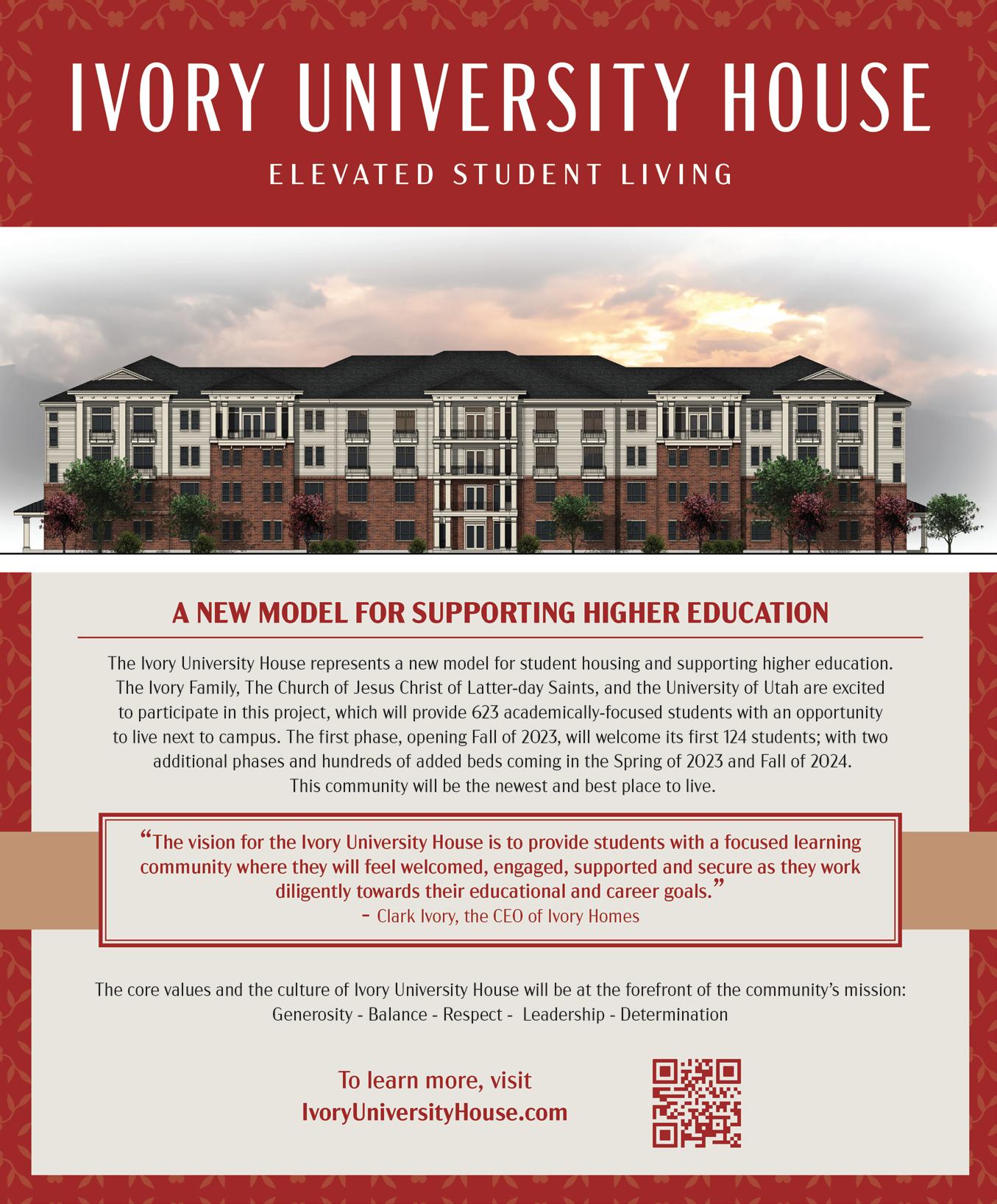
ALLIED AGAINST TYRANNY
BY AMY CHOATE-NIELSEN ILLUSTRATIONS BY JOE GOUGH
As the tour bus drove toward Omaha Beach, Steve Hall scanned the coastline for a sign, motioning the driver to pull over when the telltale French bluffs came into view. They parked on the side of the road near one of the five sites where Operation Overlord—D-Day— occurred on June 6, 1944, nearly 80 years ago. Thousands of soldiers crossed the sands of Normandy that day, helping to save Europe from German invasion, and this spot was particularly significant.
Hall called a puzzled passenger to the front of the bus, pointed at the sea, and said, “I’m positive your dad came ashore between there and there.” As a retired Air Force colonel and teacher in the U’s Continuing Education department, Hall relishes moments such as these, when the past comes alive. He had come to France a week before to make arrangements and figure out meaningful connections for his students, some of whom had close relatives who fought in D-Day.
As memory of the events that led to D-Day begin to fade, the lessons taught in Hall’s Osher Lifelong Learning Institute classes and Go Learn experiences are becoming even more significant. The monumental military operation was a turning point in World War II, rife with strategic and moral takeaways, but it also
marked a collective stand of allies against tyranny—democracy over dictatorship. The hardwon battle against Nazism inspired a generation to vow “never again”—but as extremist sentiments and Holocaust denials increase, historians wonder if the past could repeat itself. At the U, history classes and library exhibits are keeping the memory alive—and so is Hall, every time he tells the story.
“We went down and stood on the beach just like [the soldiers] did,” Hall says of a recent Go Learn trip. “And this sounds corny, but I think the 4,413 souls of the people who died on the beach knew we were there.”
Battle Stories
You might think Hall would retire after serving in the Air Force for 26 years and completing two other careers after that. But at 77 years old, he is happy to teach Continuing Ed—it’s more of a love affair than a job.
“I’m evangelical about telling the story and telling it right,” Hall says. “I think it’s unconscionable that important parts of American history just aren’t taught anymore.”
Hall thrills over the details of D-Day that can be overlooked. The massive military undertaking was in the works for two years before it happened, requiring the United
Kingdom, Canada, and the U.S. to build and assemble a fleet of boats with flat bottoms just for this purpose. The initial plan was to launch the attack in May, but they were running behind—and running out of time. Each day, the Allied forces risked being discovered and the possibility that Germany would send more soldiers to the area.
A storm raged in early June, but a break in the clouds—unseen by Germany—gave the U.S. the element of surprise. At 6:30 a.m., the boats floated in and lowered their ramps at five beaches: Utah, Omaha, Gold, Juno, and Sword. Hall quizzes his students at a moment’s notice to check that they remember the names.
The first waves of soldiers who disembarked onto the beach were under heavy fire, and casualties were high. In the first two hours, 4,413 Allied soldiers were killed. The soldiers who survived changed their plans and scaled the bluffs instead of forging up the valley floor. By the end of the day, 156,000 soldiers had deployed onto the beaches.
“The plan went to hell in a handbasket almost instantaneously,” Hall says. “Instead of the guys on the beach saying, ‘What do we do now?’ They said, ‘OK, we’ve got to do something different.’ And that turned out to save the day.”
Hall believes the frontier spirit—an “act first,
22 UNIVERSITY OF UTAH MAGAZINE
THE IMPACT OF THE D-DAY INVASION WAS MONUMENTAL. CAN THE LESSONS IN
COURAGE AND DEFENDING A SENSE OF IDEALS HELP GUIDE US TODAY ?
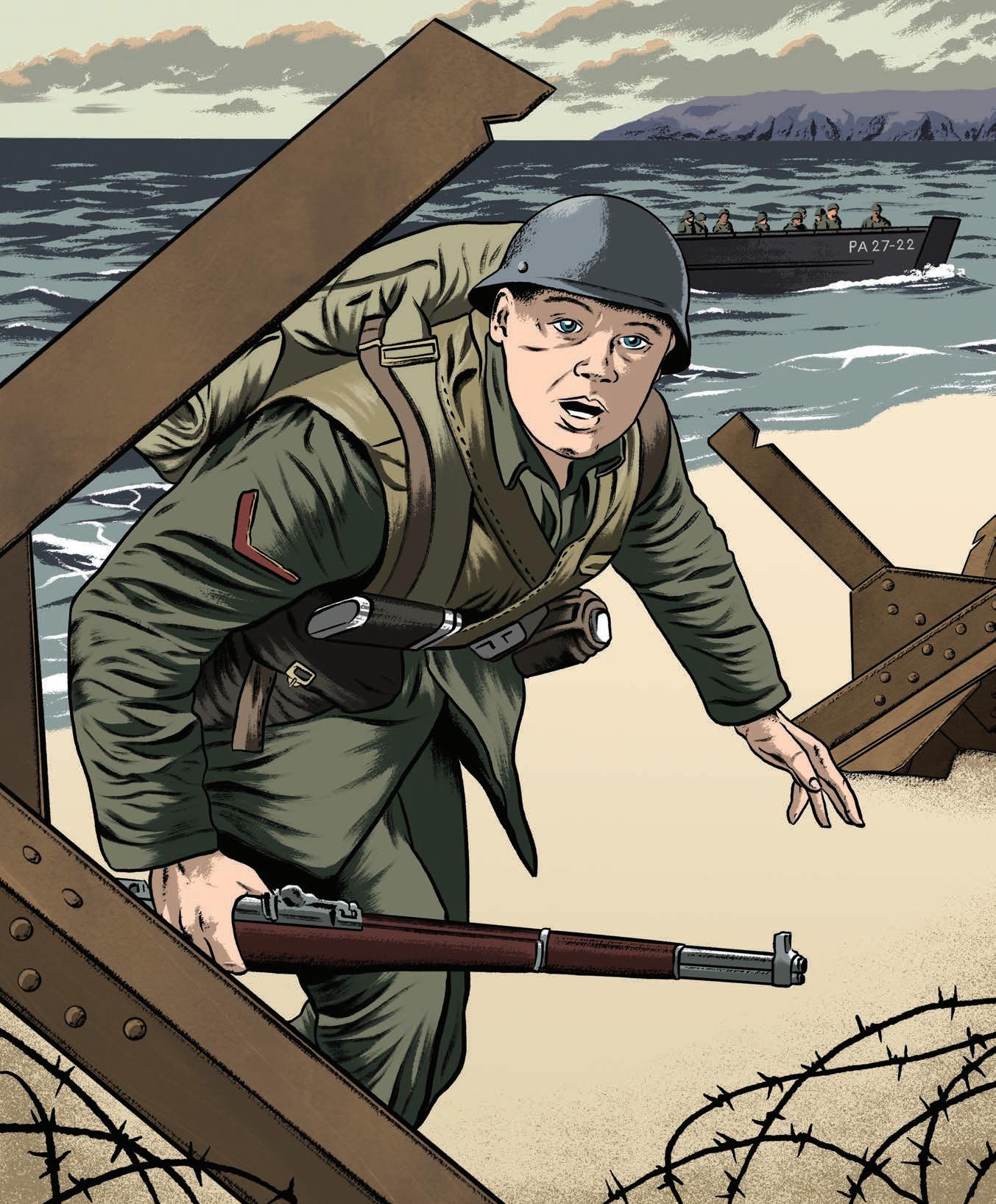
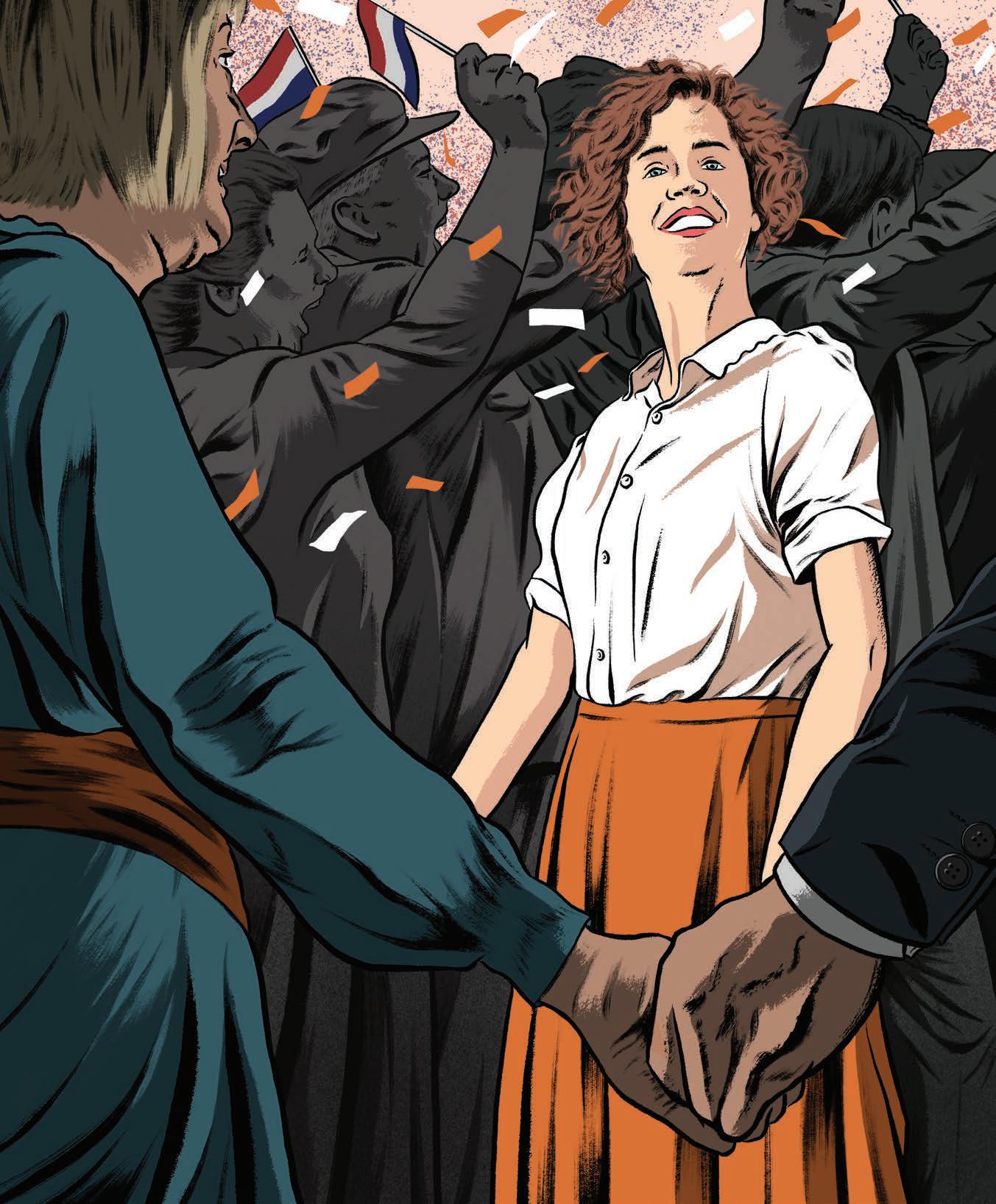
ask forgiveness later” attitude—allowed the Allies to succeed. The importance of being decisive while being flexible is a lesson that still applies today, he says.
“I use D-Day as an example all the time,” Hall says. “Make your decisions, make them fast, and if they don’t work, do something else.”
Holding On
Of the 16 million Americans who served in World War II, fewer than 200,000 are still alive. The war ended 77 years ago, and often, those who can answer questions and say, “I remember, I was there,” are in their 90s. Their stories are at risk of fading away if they are not preserved.
In the early 2000s, the American West Center in the College of Humanities embarked on a mission to capture those stories in a project called “Saving the Legacy: An Oral History of Utah's World War II Veterans.” As part of the project, the center has interviewed 433 veterans, filling nearly 600 tapes, which are held at the J. Willard
“Nazi Germany and the Holocaust” classes. As an associate professor of German and European history at the U, she knows her material can seem bleak and foreign to this new generation, but still, they sign up.
“Even if they did not have grandparents or great-grandparents who served in the war, students are very much interested,” Ault says.
It just so happens that Ault’s own grandfather was at D-Day as a war correspondent who came onto the beach in one of the last waves, wading through the water with his typewriter over his head. She sometimes thinks of him when she receives letters from those who say the Holocaust didn’t really happen or wasn’t as bad as it sounds.
“It is not an accident that we’re seeing a rise in violence now as living memory of World War II disappears,” Ault remarks. “The societal knowledge of what violence and war can bring on society is lessening, and that taboo of violence is fading away.”
The impact of World War II on Europe was devastating and long-lasting. At the end of the war, there was no independent Germany for four years—it was divided into four zones of occupation and became the front line of the Cold War. Wholescale death and cataclysmic disruption of life impacted tens of millions of people, with entire cohorts of society who died. It took the Soviet Union until the 1960s to have equal numbers of men and women again. After bombings across Europe destroyed a massive number of homes, it took years to rebuild housing stock across the continent.
Saving the Legacy
The first-person accounts of the men and women involved in World War II are simultaneously fascinating, sobering, and inspiring. Here are excerpts from recorded oral histories in the Saving the Legacy project.
Allen R. Ervin roy , utah
Fought on D-Day at Omaha Beach in Normandy
“When you’re in a war, war is going on 360 degrees all around. You can only see one degree. You don’t know what was going on anywhere else, just where you were. So, everybody’s experience is different.… If I had to do it all over again, yes, I would. If I knew I was going in, in the first wave, yes, I would. Things have changed.… It was a different time. It was a time of unity.”
Marriott Library. Veterans of subsequent wars have since been included as well.
“Their contribution was hugely important, and they deserve to be added to the history of our country,” says Liz Rogers BA’99, head of manuscript archives in Marriott Library’s Special Collections department.
Outside of the oral histories, the library has 510 listings of collections for World War II. Some of the items are documents from donors who gave personal papers from their war-time service, and others are memorabilia—including a field stove the size of a Thermos bottle, a flight jacket, and a Women Airforce Service Pilots (WASP) scrapbook.
The library takes pains to preserve each item with acid-free bond paper, boxes, and folders.
“The main purpose of our division is to make sure that in one hundred years, the collections will still be a viable part of American culture,” notes Rogers. “It will not only be something you can read about; it will be touchable and useful.”
Next Generation
Julie Ault takes comfort in seeing the numbers of students who enroll in her “Age of Total War” and
The course that led to such devastation began with economic hardship around the world in the 1930s. Fascism and communism grew in popularity in response to the Great Depression and resultant deprivation, and people craved action, seeing democracy as weak. When the U.S. disembarked on the shores of France as part of D-Day, it wasn’t to occupy a territory or take power—it was to defend a sense of ideals, to preserve freedom, and to eschew the disregard of human life, Ault says.
Although time is pressing forward, the lessons of D-Day don’t have to fade away, Ault adds. The stories of history and those who’ve gone before can remain in books, in libraries, and in the classroom.
“I think, more generally, history is really important because it teaches us that we can do better,” Ault says. “We can learn from the past, build solutions, and make things better.” u
Amy Choate-Nielsen is the PR and Communications manager for the Office of Academic Affairs.
Web Extra Read more histories recorded in the Saving the Legacy project at magazine.utah.edu/legacy
Sophia
Howard salt lake city A Holland native liberated by Allied forces
“You see it in the war movies that you see sometimes. It was really that. I remember real well… when we got liberated. Oh, that was so much fun. They came in on tanks. We climbed up on those things. We were so happy. I remember they had big containers full of crackers. And they kind of distributed that to us. We were really pretty hungry then, because we hardly didn’t have any food anymore. We didn’t have any heat. I sometimes think, oh, how did we ever survive? It’s amazing—when you have to do it, you do it. That’s all there is to it, really, because there is no other way, and somehow, we survived.”
Adelia “Dee” Hall Rushforth fruit heights , utah
A U alum (1941) who joined Women Accepted for Volunteer Emergency Service (WAVES) in the Navy
“They were pleading for women to go work in the offices so the men could go to war and fight the actual battles. We were very patriotic in our day. We loved our country, and we wanted it safe, so we did everything we could. That was a good thing or we wouldn’t be here.… When we think about these other wars, they don’t seem like real wars to me. This was a real war. This is the war where every one of your brothers and your father, if he was young enough, all your friends, all of them went to war and a lot of them didn’t come back.”
WINTER 2023 25
“ WE CAN LEARN FROM THE PAST, BUILD SOLUTIONS, AND MAKE THINGS BETTER.”
This year, 650 hospitals from across the country took part in the Vizient Quality and Accountability Ranking. The ranking measures performance on the quality of patient care in safety, mortality, effectiveness, efficiency, patient centeredness, and equity.
For the 13th consecutive year, University of Utah Health ranks in the top 10 nationally of the prestigious 2022 Vizient Bernard A. Birnbaum, MD, Quality Leadership Award.
“Organizations do not achieve—it is the people in organizations who are responsible for accomplishments,” said U of U Health CEO Michael Good, M.D. “Thanks to our teams’ dedication to excellent patient care, this honor distinguishes the people who make U of U Health a top health care institution in the country, as some of the best in the nation.”
THE VERY BEST PATIENT OUTCOMES—
IT’S WHAT HAPPENS WHEN WE’RE NATIONALLY RANKED IN THE TOP 10 IN HEALTH CARE FOR 13 YEARS STRAIGHT.


 By Seth Bracken
By Seth Bracken
Campus is rapidly transforming. From largescale housing projects to a new medical school facility in progress, what students see walking to class is very different today than it was even 10 years ago. But what if you could turn back the clock 100 years? What would this area look like? Follow along in these pages as we tour some of the U’s buildings constructed at least a century ago. Or use this as a guide to visit these historic spots yourself.
AgoYears
WINTER 2023 29 100
for classes at the new campus opens on Oct. 1 and 183 students enroll 1901 The State School of Mines is established 1902 The Varsity Glee Club, started in the 1890s, expands with the Girls Glee Club
Maddock joins the U as Athletic Director, boosting sports programs across campus
Students start an Arbor Day tradition of planting trees, some of which stand today in Presidents Circle
medical courses begin in the Department of Biology with 14 students
1900 Registration
1903 Joseph
1904
1905 Two-year
events at the U from near the turn of the last century
What did campus look like a century back? 1900–1922 Significant
Illustrations by Daniele Simonelli
Meet the Oldest U Buildings
1
Thomas S. Monson Center (1904)

Our tour starts on South Temple and 400 East. Previously known as the Enos Wall Mansion, this was Utah’s first “fireproof” building encased in a cement plaster. While you wander, consider the meetings and classes held here, as it has housed the Salt Lake Jewish Center, the Pacific National Life Assurance Company, and even the LDS Business College. It was designed by German-born architect Richard K.A. Kletting, who also designed the State Capitol and three of the four buildings in Stop No. 4. Thanks to a generous gift from The Church of Jesus Christ of Latter-day Saints and other community partners, it’s now home to the U’s Kem C. Gardner Policy Institute, a leading voice on public policies impacting the Beehive State.
2
Voice & Opera Center (1901)
Make your way up to main campus and gaze at an unassuming—yet elegant— building tucked behind the Libby Gardner Concert Hall. This small, gray structure was originally built to be a heating and foundry plant for campus. But don’t let its humble beginnings fool you. In 1944, it served as home to Ballet West’s forerunner before becoming headquarters for KUED and KUER in 1991. It was here that the Utah Education
Network was launched. Then, in 1994, the current occupant—Utah Lyric Opera Ensemble—took up residence.
3 The Park Building (1914)
Take a jaunt to the top of Presidents Circle. Gazing out across the horizon from this vantage, it’s easy to imagine the interwoven connection
the U has with the city and state—a relationship built over the course of 150 years as the first state university west of the Missouri River. Originally called “Central Building,” it was renamed in 1919 after former U president John R. Park. Now it’s home to the Office of the President and other university administrators and is a symbol of the tradition and excellence of the U.
1906
1907
1908
1909

30 UNIVERSITY OF UTAH MAGAZINE
The first professionally trained librarian, Esther H. Nelson, is hired
The block U is constructed on the foothills above the university
Greek life arrives with the founding of the Beta Epsilon Chapter of Sigma Chi
Enrollment tops 1,500 1911 The U launches 31 extension courses in 15 communities around the state
medical program is
as a separate two-year Medical School
A state bacteriologist and pathologist position is created
1910
1912 The
created
HISTORIC IMAGES COURTESY J. WILLARD MARRIOTT LIBRARY AND UTAH STATE HISTORICAL SOCIETY (TOP P. 33, COURTESY RED ROCK LAKES NWR HISTORICAL SOCIETY)
(Top) U campus from above circa 1920; (bottom) formation of new soldiers, 1918

4
(Top) East end of 200 South in what’s now Presidents Circle, 1912; (bottom) Presidents Circle circa 1920
The Founding Four (1901-1902)
From the steps of the Park Building, look left and right. The two buildings to the northwest—now called the John A. Widtsoe Building (1901) and the LeRoy E. Cowles Building (1901)—and the two buildings to the southwest—the James Talmage Building (1902) and the Alfred C. Emery Building (1901)—made up the infrastructure of the university in the early 1900s.
Originally called the University of Deseret and founded in 1850, it was renamed the University of Utah in 1892. Two years later, Congress granted a 60-acre tract of land to the U from the Fort Douglas Military Reservation. The state legislature appropriated $200,000 for the first four buildings—physical science, liberal arts, education, and a museum—that now make up Stop No. 4. After the plan was announced, the Salt Lake Tribune wrote, “There will be

journey around the world.”
(Opposite page)
Homestead in Lakeview, MT, that would eventually become part of the Taft-Nicholson Environmental Humanities Education Center, 1900
no University in the world that will command so magnificent a site…. The people who will be here will declare that the University is on the most delightful spot that can be found in a journey around the world.”
The original layout called for a circular drive with one main entrance. However, after the first four buildings were complete, the Board of Regents expanded the plan into the horseshoe shape you still see today.

5 William Stewart Building (1920)
Exit Presidents Circle and head southwest to our next stop. Take note
of the building’s original construction, as it’s about to undergo a major renovation. While preserving the historic character, when complete, the remodeled home of the departments of Physics & Astronomy and Atmospheric Sciences will have space for more than 5,600 students. It will provide a home for research focusing on aerospace, semiconductor technology, biotechnology, data science,
hazardous weather forecasting, and air quality.
6 Life Sciences Building (1920)
Take a few steps to the east. Originally intended as an industrial space, it was devoted to the medical school after the end of WWI. The current medical school was opened in 1965, and it’s also about to undergo a major
32 UNIVERSITY OF UTAH MAGAZINE
law
1914 The U begins
1915 The Academic Senate is formed to address
1916 The School of Pharmacy is established 1917 The business school is founded as the School of Commerce and Finance
The first Songfest— an annual student presentation of song-and-dance routines that continues today—is held
instruction
ROTC begins
“[The U] is on the most delightful spot that can be found in a
1913 The
school is formally established
offering correspondence courses in civics, psychology, and history of education
issues of academic freedom
1918
1919 Regular
of the
renovation, with the new Spencer Fox Eccles School of Medicine slated to open in 2025 (see p. 10).
7
Fort Douglas Museum
The oldest building on campus (1874), it was originally an Army barracks. Now, it hosts exhibits about the history of Utah and other western states. Kids of all ages will love the outdoor Military Vehicle Park, complete with cannon and tanks.
Post Chapel
Built in 1884, the Post Chapel in Fort Douglas has stood the test of time—but not without some help. It underwent major renovations leading up to the 2002 Olympic Winter Games and now serves as an interfaith center for multidenominational use.
BONUS STOP 9
Taft-Nicholson Environmental Humanities Education Center (1890)
Notable Alums
As you stroll the paths, consider some of the inspiring people who studied in this exact location. From authors to actors and activists to researchers, here are a few who you could’ve bumped into if you were right here a century or so back.
African American rights activist and Harlem Renaissance writer Wallace Thurman , author of The Blacker the Berry: A Novel of Negro Life , was on a pre-med track when he attended the U from 1919-20. He later moved to New York and worked with the likes of Zora Neale Hurston, and he even wrote a play that ran on Broadway.
One of the first-ever Rhodes Scholars, Ralph Hartley was a founding figure in the field of information technology. He graduated from the U in 1909.
Performing Arts Building (1920)
Just west of the Campus Store lies the next destination. Originally a mess hall, it accommodated 600 people at a time. Now, you can see some of the finest student productions in the 108-seat theater, Studio 115. 8
Fort Douglas (1874)

It’s time to head up the hill. Founded in 1862 as Camp Douglas, named after Illinois senator Stephen Douglas, this National Historic Landmark has seen everything from German prisoners of war in the early 1900s to the Olympic Village in 2002. It was the training grounds for thousands of recruits in WWI, and it housed the 7th Bombardment Group operating B-17 Flying Fortresses in WWII. There are more than two dozen structures here that date back well over 100 years. For a full list, visit magazine.utah.edu/historic.
As you roam around the houses, bandstand, and other gathering places, consider spending a few extra moments at a couple of our favorite stops.
Some 320 miles north on the border of Idaho and Montana lies our last stop. What may appear to some as the set of a Western flick is actually a small retreat on 16 acres of pristine wilderness in Montana’s Centennial Valley that used to be a farming outpost. So, what does a complex like this have to do with the U? Well, after lovingly restoring the buildings, John and Melody Taft and Bill and Sandi Nicholson gifted the space to the U in 2013 to be used to ignite and foster a passion for nature and stewardship in students. Charming and elegant guest cabins, a dormitory, a large conference room, and a dining hall now host various student and artist-in-residence programs. u
Seth Bracken is editor of Utah Magazine.
Indigenous Land Acknowledgment: We acknowledge that this land, which is named for the Ute Tribe, is the traditional and ancestral homeland of the Shoshone, Paiute, Goshute, and Ute Tribes. The University of Utah recognizes and respects the enduring relationship that exists between many Indigenous Peoples and their traditional homelands. We respect the sovereign relationship between tribes, states, and the federal government, and we affirm the University of Utah’s commitment to a partnership with Native Nations and Urban Indian communities through research, education, and community outreach activities.
Web Extra For a full list of university buildings 100+ years old, visit magazine.utah .edu/historic
Martha Hughes Cannon enrolled in then-University of Deseret at the age of 16 and graduated with a chemistry degree in 1878. She went on to become a Utah state senator, women’s rights advocate, suffragist, and physician.
The actor behind the cantankerous neighbor George Wilson in the television series Dennis the Menace and the voice of the doorknob in the original Alice in Wonderland Joseph Kearns (above, left)—studied at the U. He taught theatrical makeup classes to fund his tuition studying music at the U in the 1920s.

Emma McVicker became the first woman regent at the U in 1896. Four years later, she would earn a bachelor’s degree here. A fierce advocate for children and education, she founded Utah’s first free public kindergarten. She went on to be Utah’s first woman state superintendent of schools in 1900. It took 109 years for another woman to fill that post.
Before he was president of The Church of Jesus Christ of Latter-day Saints, David O. McKay was a player on the U’s first football team. He graduated in 1897 as valedictorian and class president.
1920 Student enrollment tops 3,000 1921 The first Homecoming Week is held at the U 1922 Student enrollment reaches 3,000 WINTER 2023 33

34 UNIVERSITY OF UTAH MAGAZINE
Kayla Kidd
When kayla kidd was in her first semester of college, she was ready to quit. She felt overwhelmed, isolated, and unsure how she was going to afford tuition. Kidd, who is Northern Ute and Uncompahgre from the Ute Indian Tribe, was just a three-hour drive from her family and home on the Uintah and Ouray Reservation—but to her, it was a world away.
IBELONG HERE
to help close that gap, THE U IS WORKING to MAKE COLLEGE POSSIBLE for more INDIGENOUS STUDENTS.
By Lisa Anderson • Photos by Dave Titensor
“I was alone in my little box,” she says. “I was the only brown kid in the class. I didn’t understand the way some of my professors taught. And I just felt like everybody looked down on me—like they didn’t see me succeeding.” An advisor warned her she was in danger of failing and having to leave the U. The conversation shattered Kidd’s already fragile state. “I felt like if she didn’t want me here, then nobody wanted me here.” Research shows other American Indian college students experience similar feelings. In a recent study from Arizona State University, students reported feeling they didn’t belong, didn’t know how to navigate college, and found it hard to be disconnected from their families, culture, and traditions. Finances are a major worry as well. In a 2022 Indigenous students college affordability report, nearly a quarter of study participants didn’t know how they would pay for college the next year, and 72 percent reported they’d run out of money at least once in the last six months. Some even experienced food insecurity and homelessness. These concerns can, of course, have a damaging effect on completion rates. In fact, Indigenous students are more likely to leave college during their first year than any other racial or ethnic group. Supporting these students takes a comprehensive approach, and University of Utah leaders are working to expand programs and resources that help students like Kidd succeed, says Martha Macomber, the U’s education liaison to the Ute Indian Tribe.
It was Macomber who Kidd reached out to at her lowest point. Macomber helped her find financial aid, tutoring, social support, and a renewed sense of determination.
“I wanted to prove that I wasn’t going to fail any of my classes,” Kidd says. “And I didn’t. I pushed through and finished.” Now a sophomore, she’s pursuing a degree in criminology and thinks law school may be in her future. Her end goal is to work on behalf of crime victims in her community.
WINTER 2023 35
AMERICAN INDIANS have the LOWEST NUMBER of COLLEGE DEGREES of ANY RACIAL or ETHNIC GROUP.
Macomber believes it’s the U community that truly benefits when more Indigenous students are included. “The university is greatly enriched by the wisdom, life experiences, and talents these students bring,” she says.
THE POSSIBILITY OF HIGHER EDUCATION
On a sunny day in June, a group of middle and high schoolers from the Uintah and Ouray Reservation are standing in the foothills above campus. The cheatgrass is still green this time of year, and it ripples like waves as the students listen to the U’s Indigenous land statement (see p. 33), which the U launched in 2020 to recognize that the university sits on ancestral tribal homelands. After the students finish their hike along the Bonneville Shoreline Trail, they’ll return to their dorm rooms in Kahlert Village to work on video and art projects. The next day they’ll play with Marriott Library’s VR equipment, followed by bowling at the Union.
It’s all part of the Ute Storytelling Camp, led by Macomber in collaboration with the J. Willard Marriott Library, College of Fine Arts, American Indian Resource Center, and other U partners.
The camp is a chance for kids to connect with their personal and family histories while experiencing what the U has to offer.
The university’s relationship with the Ute Indian Tribe began with a naming agreement and blossomed into a partnership guided by a Memorandum of Understanding (MOU). Through the more recent versions of the MOU, the tribe grants
the U permission to use the “Ute” name for its athletics teams, and the U provides youth programs, scholarships, post-secondary-school planning, and support for Ute Indian Tribe students to enhance their social, economic, and academic success while attending the U.
Events like the storytelling camp introduce students to the possibility of higher education, says Ronee Wopsock, Ute Indian Tribe member and director of its education department. “Students have to decide whether they want to be educated to begin with,” she notes. “They don’t always see the importance in education. Once they do, they need to know the University of Utah can be an option for them.”
A WIDENING GAP
Kyri Ungatavinekent-Duncan BS’20 (Northern Ute, Uncompahgre Band) says he knows it’s cliché, but it’s true: “College opens doors.” A recent graduate, he now works at the U’s Center for Equity and Student Belonging as leader of Native/Indigenous student engagement and advisor to the Inter-Tribal Student Association (ITSA). “College lets you tap into different things and see more potential for what you could be,” he says.
But there’s a major gap in education attainment between American Indians and the population as a whole. The National Center for Education Statistics (NCES) reports American Indians and Alaska Natives have the lowest high school graduation rates of any racial or ethnic group. The U.S. Census Bureau shows only 15 percent of American Indians and Alaska Natives age 25 or older have a bachelor’s degree, compared with 31 percent of the overall population.
And the gap is widening. The number of bachelor’s degrees increased over the past decade for all racial and ethnic groups except American Indians and Alaska Natives, according to NCES. Start pulling at the threads of why this gap exists, and you’ll soon have a tangle of systemic barriers. Wopsock says college readiness is one such obstacle, with underfunded schools lacking the resources to prepare kids for higher education effectively. Geographical distance from traditional homelands is another factor, notes Samantha Eldridge BS’08 MPA’10 (Diné), director of the U’s American Indian Resource Center.
With many students coming from low socioeconomic backgrounds, Eldridge says finances are the number one barrier. It’s a vicious cycle—education can help build generational wealth, but that lack of wealth makes college inaccessible for many American Indian families. Even if students receive aid, the funds typically aren’t enough to meet their significant financial needs.

So in 2022, the U introduced the Native Student Scholarship for students enrolled in one of Utah’s eight federally recognized tribes—the Confederated Tribes of Goshute, Navajo, Northwestern Band of Shoshone, Paiute Indian Tribe of Utah, San Juan Southern Paiute, Skull Valley Band of Goshute, White Mesa Band of the Ute Mountain Ute, and Ute Indian Tribe (also known as the Northern Ute Tribe)—or in the three border tribes that receive in-state tuition: Hopi, Zuni, and ShoshoneBannock. The scholarship will pay for undergraduate student tuition and mandatory fees not covered by scholarships and grants from all other sources.
“My vision for the U is to impact the lives of all 3.4 million Utahns,” said U President Taylor Randall HBA’90 in a news release announcing the move. “This includes members of Utah’s tribal nations. This is a vital part of committing the U to deliver a transformative educational experience to communities across Utah.”
However, not every student who identifies as American Indian is enrolled in a tribe—eligibility requirements vary from tribe to tribe and can be complicated. But Eldridge says U leaders are committed to finding the most equitable paths to
36 UNIVERSITY OF UTAH MAGAZINE
Martha Macomber
“ COLLEGE lets you TAP INTO DIFFERENT THINGS and see
MORE POTENTIAL for WHAT YOU COULD BE.”

WINTER 2023 37
Kyri Ungatavinekent-Duncan

38 UNIVERSITY OF UTAH MAGAZINE
Kiyanna Porter
the scholarship for as many Indigenous students as possible. The significance of this announcement goes beyond financial support, she notes. “It also sends the message to our Native students that we want you to come to the U.”
“I BELONG HERE”
There’s a line from the movie Smoke Signals that Kiyanna Porter (Din é ) says encapsulates the feeling of leaving the reservation: “You guys got your passports? You’re leaving the rez and going to a whole different country.”
Porter, a math major in the Honors College at the U, grew up in mostly urban and suburban areas in Utah, California, and Idaho. But she also lived on the Navajo Reservation and understands the perspective of going from a tribal community to a predominantly white university far from home.
“For some people, it’s the biggest leap they could ever make,” she says. “It’s hard when you only know one world, and all of a sudden you’re thrown into a different world that feels like it wasn’t made for you.”
Ungatavinekent-Duncan says he immediately noticed a lack of representation when he first arrived at the U. Just 128 of the U’s 34,000 students identify as American Indian, and that means resources for Indigenous students are hard to come by. Part of his job at the U is to help build more programs centered around their needs.
Microaggressions and racism add a painful layer to the feeling of not belonging. Porter points to an incident at the beginning of the 2022-23 school year: an American Indian student practicing a powwow dance in the Student Rec Center was unknowingly recorded by another student, who posted the video online with the hashtag #Utealcoholic. To actively address incidents like this, the U created a racism response team in 2019 as part of a concerted effort to fight racism on campus. Part of the response to this particular incident, for example, was to secure private spaces on campus where students can practice their spiritual traditions.
Porter says that when the U community pays attention to the discrimination and injustices Indigenous people face, students feel seen and heard. As the U’s 2022-23 American Indian Woman Scholar, she raises visibility of Indigenous issues. She also co-leads ITSA, which organizes awareness events and social gatherings to provide students with a sense of belonging.
Researchers say that sense of belonging is crucial to Native students’ likelihood of persisting. The American Indian Resource Center (AIRC) embodies that goal, with a motto of “I belong here.” The AIRC connects students with programs and resources that support their academic success and well-being and provides a welcoming space students describe as a home away from home.
Eldridge was an undergrad the year the AIRC began. Still adjusting culturally after moving from the Navajo Reservation to Salt Lake City as a teenager, she “felt the center was the only place I could go and connect with other students who looked like me,” she says. “I didn’t have to explain anything about my culture or the way I did things.”
Now she and her AIRC colleagues are planning to create more spaces on campus where American Indian students feel safe and welcome, and more opportunities for them to engage around their identity, culture, and traditions. The AIRC intends to launch new initiatives, including a Native Excellence

Scholars program for every student receiving the Native Student Scholarship. The program will provide holistic support through mentoring, academic skill development, culturally relevant programming, and preparation for life after college.
The U’s Native American Research Internship (NARI) is an example of an academic program that provides holistic support. Created in 2010 to address the need for more American Indian scientists and health care providers, the 10-week paid internship for undergrads from the U and other schools. Students receive hands-on research experience and meet with mentors at the U and in the larger American Indian community, who help them integrate their cultural identity in the research environment. Program manager Wallita Ranger (Diné) says the mentor network is vital to student success. Some 25 students take part each year, and 80 have gone on to graduate or medical school.
U leaders and tribal partners emphasize there is still much work ahead. Ronee Wopsock says we’re just at the beginning of the relationship between the university and the Ute Indian Tribe. “I’m excited to see it grow,” she says. “As we keep working together, we’ll continue to see success for the university and our tribal youth.” She believes the U’s work with the tribe can serve as an outreach model for all eight of Utah’s Native nations.
In fact, Macomber will soon take on similar work with those tribes as she does with the Ute Indian Tribe, like post-secondary-school planning. She notes that her role here isn’t necessarily U recruiter. Rather, these efforts are part of the U’s vision to serve Utah’s communities. Wopsock says the university must work in tandem with tribes, listen to tribal leaders, and provide guidance as students find the path that’s right for them. That may mean a university closer to home or community college or a trade school.
But for many students, their dream is to attend the U. “It’s what they aspire to,” Macomber says. “And once a child has that aspiration, and they live in Utah, it’s our mission. It’s our values to say we will do what we can to make that aspiration come true.” u
Lisa Anderson is associate editor of Utah Magazine
WINTER 2023 39
Samantha Eldridge
“FOR SOME PEOPLE, [ going to college ] is the BIGGEST LEAP THEY COULD EVER MAKE.”

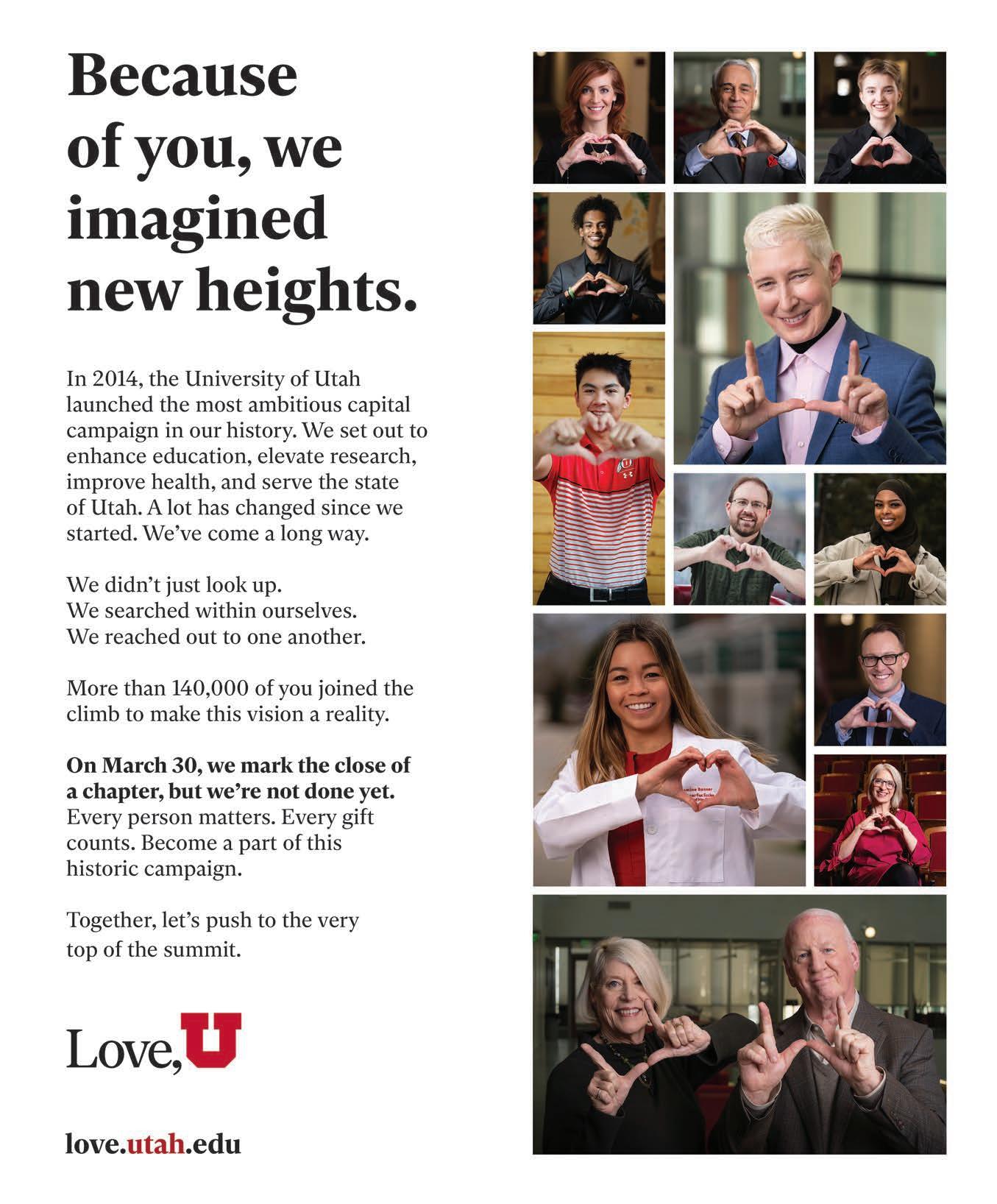

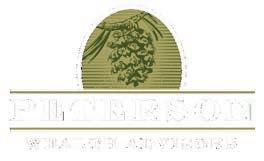

outlive money Or will your money outlive you? YOUR Will you Get your free copy today! Visit PetersonWealth.com/plan-on-living-theu (or scan our QR code with your smart phone) *Sharpe,WilliamF.;Scott,JasonS.;&Watson,JohnG.“EfficientRetirementFinancialStrategies.” July2007- Sharpe,ScottandWatsonarenotaffiliatedwithPetersonWealthAdvisors.PetersonWealthAdvisorsisaregisteredinvestmentadviser. Informationpresentedisforeducationalpurposesonlyanddoesnotintendtomakeanofferorsolicitationforthesaleorpurchaseofanyspecificsecurities,investments,orinvestmentstrategies.Besuretofirstconsultwithaqualifiedfinancial adviserand/ortaxprofessionalbeforeimplementinganystrategydiscussedherein. For the new retiree, converting a career’s worth of savings into lifelong income is challenging. Too often they are sold strategies that don’t work: Relying on annuities Betting on the market Living off of interest/dividends The Perennial Income ModelTM, a proprietary investment plan inspired by a Nobel Prize-winning economist,* is designed to: YOU NEED A PLAN Maximize your retirement income Minimize your taxes Protect your income from the effects of inflation Scott Peterson “wrote the book” on the Perennial Income Model He’s spent the past 35 years helping retirees, developing real world retirement income strategies. It’s all outlined in this... Free PLAN ON LIVING 801-225-0000


A Lifesaving Friendship
A bond formed in the U’s Marching Band leads to an ultimate act of kindness years later
When Bob Bedont BS’79 met Danny Soulier BMU’03 at Rice-Eccles Stadium in 2000, he had no idea just how significantly Danny would impact his life. At age 40, Bob had become the “voice” of the University of Utah Marching Band and found himself striking up conversations with drum section leader Danny. Though a generation apart, “We just hit it off,” Bob notes. “We developed a friendship that’s lasted years.”

Bob stayed with the band until illness put him on the sidelines. In 2019, he learned his kidneys had failed. He started dialysis and eventually was placed on the organ donation list. Organs from deceased donors are so limited that patients wait years, some even dying before getting their chance, says Anna Petersen BS’02 MPAS’07, a physician assistant on Bob’s kidney transplant team at Intermountain Healthcare.
Eleven family members and friends offered to give Bob a kidney. But in each case, hope turned to disappointment when none met the strict health requirements. Word about Bob’s situation reached
Danny, and he immediately felt the need to act. “Bob needs a kidney, I have an extra one—let’s make this happen,” he remembers thinking. “I had no hesitation.”
Danny met the requirements, but he wasn’t a match. This time, however, Bob wouldn’t be disappointed—the National Kidney Registry facilitates paired donations in such cases. Danny’s kidney went to a matched recipient in the registry, and Bob received a kidney from a matching donor. If it weren’t for Danny, Bob would likely still be waiting years for a transplant. “It means the world that I was able to help him,” says Danny.
Anna says she found Bob and Danny’s story so powerful because “this was just a happenstance friendship. Sometimes you cross paths with people and you don’t know the impact they’re going to have.”
Bob says he’s still amazed at Danny’s donation. “I'm not a family member. He had no obligation to do this other than he wanted to help a friend. That’s the definition of love to me.”
44 UNIVERSITY OF UTAH MAGAZINE
Danny Soulier (left), Anna Petersen (middle), and Bob Bedont reunite on the field at Rice-Eccles Stadium.
PHOTO BY DAVE TITENSOR
Films
Larger than Life
Writer Anayat Fakhraie BA’08 always knew he loved people and stories. And the bigger the personality, the better. “That’s why TV/ film was an alluring avenue for me. Because it’s centered around people,” says Fakhraie. Since graduating from the U, he’s been involved with several major projects, including Real Time with Bill Maher , a STARZ original called Gaslit starring Julia Roberts and Sean Penn, AMC’s Orphan Black: Echoes , and a new Marvel series.
He’s now working on a miniseries based on a New York Times article about how the death of Muslim Marine Raheel Siddiqui revealed a culture of brutality and latent racism in the ranks. “What sets this story apart from the familiar headlines is a real focus on the immigrant experience,” says Fakhraie. “And what it feels like to lust after the trappings of pride and respect readily given to servicemen, only to discover that not all Marines are treated equally.”
Impactful TV Series

Taxi: There was just something special about a show set in a greasy NYC garage with an oddball crew of unlikely friends. The only thing of value in their lives was each other.
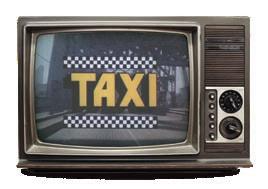
Class at the U
Screenwriting with Paul Larsen. I was so desperate to get into his class that I hounded him for weeks. And once I was in, I was hooked. I owe a lot to that good man.

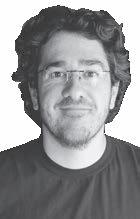
Surprise Lesson
Bill Maher was an intense proving ground for me. It’s a LIVE show, so you need to work smart and fast, and you can’t afford to be precious. That continual motion really helped me sharpen my writing style as I moved on to other projects.


Hometown
Ogden, Utah: The birthplace of 1970s film legend Hal Ashby! Harold and Maude, The Last Detail, Being There. It’s a wild and proud piece of Ogden’s history that I wish more people knew.
TK u
The sheer spectacle of David Lean’s Lawrence of Arabia or Miloš Forman’s Amadeus loom large in my mind.
WINTER 2023 45
Web Extra Read more of Fakhraie’s faves, as well as a Q&A about his experiences in Hollywood, at magazine.utah.edu/fakhraie
Enterprising Spirit
You know that idea that’s been percolating in the back of your brain? It’s time to take it to the next level—and the U is here to help. The new Lassonde for Life program is bringing free workshops, mentoring, networking, and more to U alums across the globe. Workshops for this year are already underway, and upcoming topics include financial models, customer profiles, and how to build sales channels.
“This is a first-of-its-kind program to support all of our graduates who have a business idea or imagine starting one sometime in the future,” says Troy D’Ambrosio BA’82, executive director of the Lassonde Entrepreneur Institute and an assistant dean at the David Eccles School of Business.
Recently celebrating its 20th anniversary, thanks to the vision and generosity of entrepreneur and philanthropist
Pierre Lassonde MBA’73, the Lassonde Entrepreneur Institute has helped thousands of students launch their own companies. In fact, its undergrad entrepreneurship program was recently ranked No. 5 in the country overall and

No. 2 among public schools by U.S. News & World Report
Lassonde for Life is a joint effort by the Lassonde Entrepreneur Institute, the university’s Office of Alumni Relations, and PIVOT Center, a university office dedicated to innovation and economic development.

“We are excited to offer Lassonde for Life to our estimated 300,000 alumni across the world,” says Kris Bosman BS’99, chief alumni relations officer. “We know many of our alumni have business ideas, and this is their chance to launch them.”
Members of the Lassonde for Life program are encouraged to take part in the the Forever Utah Alumni Network and join the Lassonde Entrepreneur Institute group. “This free-to-join platform is a resource powerhouse and an excellent opportunity to connect with thousands of fellow mentors, industry experts, and alumni pursuing similar goals,” says Karen Ashton BS’80, senior program manager in the Office of Alumni Relations, where the Forever Utah Alumni Network is housed.
See a list of workshops, learn more, and register for the Lassonde for Life program at lassonde.utah.edu/life. And visit forever.utah.edu to join the Forever Utah Alumni Network.
ELENA GARDNER
We’re hosting U Giving Day on March 28-29 for 1,850 minutes in honor of the year the university was founded. For just over 30 hours, the U invites the community to give directly to the colleges, projects, and programs they care about most. Last year, more than 5,000 people gave $1.5 million. This year, U Alumni is raising funds for scholarships and alumni programming. Visit givingday.utah.edu to learn more.
Also, to recognize the U’s proud history, the annual Founders Day celebration will be held March 1 to honor alumni who have excelled professionally, served their communities, and supported the university. Learn about the awardees in our next issue and visit alumni.utah.edu/ foundersday for more information.
Alumni News u 46 UNIVERSITY OF UTAH MAGAZINE
IMAGE BY AGENT ILLUSTRATEUR
A new program for U alums helps them start, run, and grow their businesses
PICTURE
Ask Black Grad Girl
Barbara Kufiadan BS’19 knows what it’s like to be the only Black student in class; specifically, the only Black woman. “It felt isolating and like no one was listening to my ideas,” Kufiadan says. “I’m working to change that.”
While still a student at the U, she helped launch the Black Cultural Center (BCC). And since graduating, she created the Black Grad Girl website and Instagram page to encourage more Black women to pursue graduate school by providing a community to rely on. She's also U Alumni's co-leader of the Black Alumni Chapter.
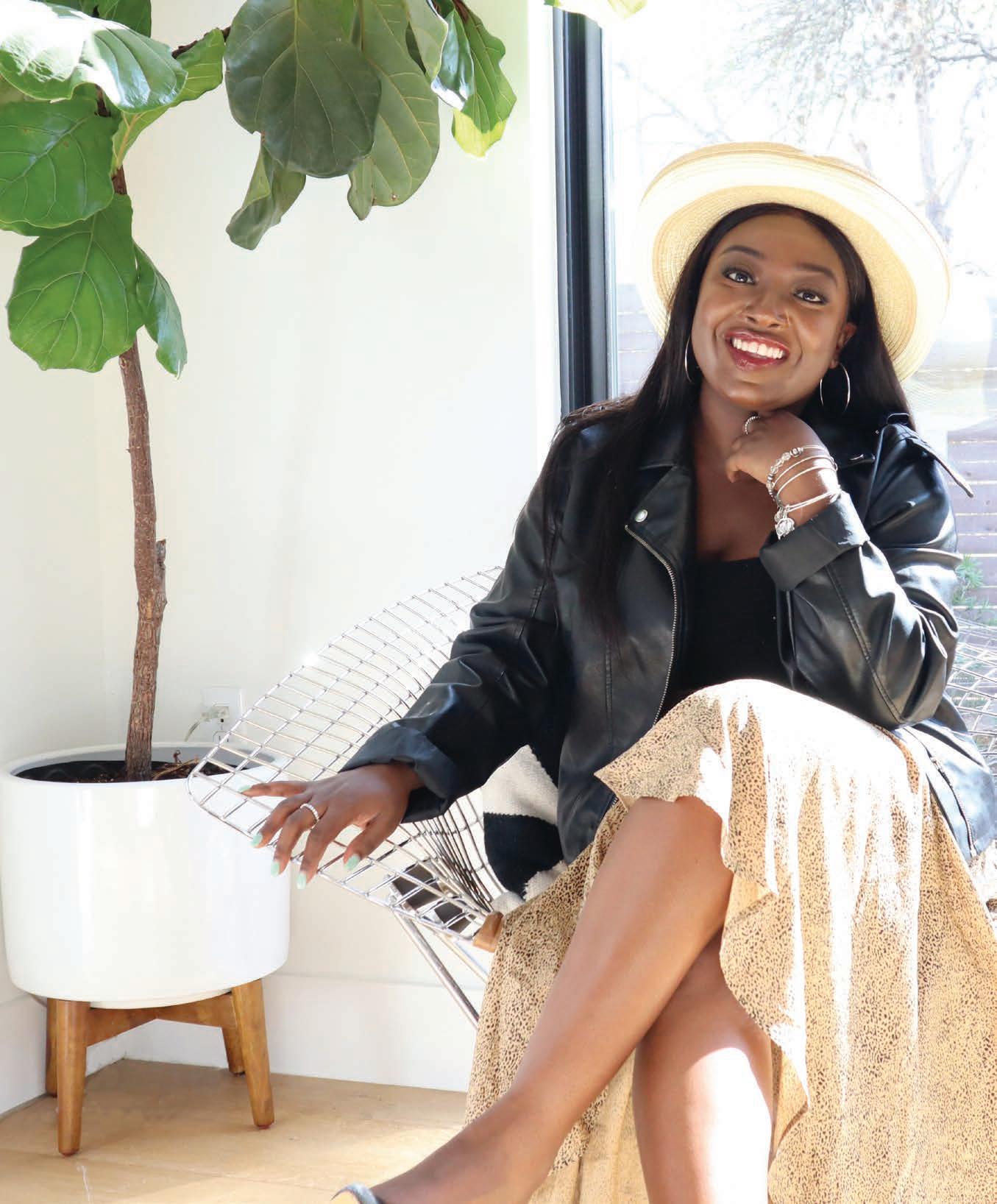
How did you get involved with the Black Cultural Center?
When I started at the U, I knew that I needed to find and form a community. My now best friend Alexis Baker BS’19 came up with the idea of a BCC. We talked about how amazing it would be for Black students, faculty, and staff to have their own space. After researching similar places, Alexis and I started writing a proposal letter with the help of faculty, other students, and some staff. We presented the idea to then-U president Ruth Watkins, and it came to fruition. I don’t think we ever thought we would be the ones to bring it to life, even with the help of those around us and those who came before us.
What is Black Grad Girl, and how did you get it started?
I started Black Grad Girl my last semester of graduate school at The University of Texas, where I got my Master of Public Affairs. It was such a learning curve in my experience of being a first-generation student. There was a lot about the process that nobody was talking about. So, I thought that it was important to have a platform where Black women would be able to share and ask questions about graduate school. I try to provide insight or find somebody who can help.
What’s the role of exposure and representation in this?
It’s essential to see Black people in different areas, particularly Black women, who aren’t usually showcased. I want to share the resiliency required to get through graduate school and build a community.
CARLY HENRY
Web Extra Read more of our interview with Kufiadan at magazine.utah.edu/askblackgrad
WINTER 2023 47
Class Notes ’60s
on the Utah Arts Council Dance Panel and three separate terms as president of the Utah Ballet Teachers Association.
Harold Alston BS’62 has published Why Do I Find Myself in These Situations?, named for the many unique flying experiences he encountered during 55 years of flying military and civilian aircraft. Alston is a retired lieutenant colonel with the U.S. Air Force.


Clytie Adams BFA’66 was honored by Utah Gov. Spencer Cox with a 2022 Governor’s Mansion Artist Award for positively impacting the arts and her community. Founder of the Clytie Adams School of Ballet, she served four years
Monica Bertagnolli MD’85 is the 16th director of the National Cancer Institute and its first woman director.

Bertagnolli was previously the Richard E. Wilson Professor
SPOTLIGHT
of Surgery in the field of surgical oncology at Harvard Medical School, a surgeon at Brigham and Women’s Hospital, and a member of the Gastrointestinal Cancer Treatment and Sarcoma Centers at Dana-Farber Cancer Institute.
Erik A. Christiansen BA’86 BS’87 JD’90 is president-elect of the Utah State Bar. Christiansen is a shareholder at Parsons Behle & Latimer, with more than 30 years of experience in high-stakes litigation, and an adjunct professor of law at the U. He was named Alumnus of the Year in 2019 by the S.J. Quinney College of Law.

Lauri Linder BS’89 MS’94 PhD’09 has been honored as a U Presidential Scholar. The award recognizes the extraordinary academic accomplishments and promise of associate professor faculty members, providing them with financial support to advance their research and teaching. One of the few clinically embedded pediatric oncology nurse scientists in the nation, Linder is a professor in the College of Nursing who has developed a game-based symptom reporting app for children with cancer.
With the appointments of Justices
Jill M. Pohlman BA’93 JD’96 and Diana Hagen BA’94 JD’98 to the Utah Supreme Court in 2022, the bench of the state’s top court became majority female for the first time in its history.
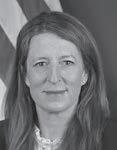
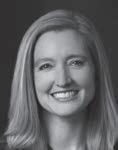
As a fourth grader, Pohlman fell in love with the law while participating in a special unit on the justice system. “After seeing how the courtroom worked, I thought, ‘I love this,’ ” she says. Hagen had initially sought to go into acting, but a free speech class at the U piqued her interest. She decided to take the LSAT and apply to law school on a whim—and got a scholarship. “I thought, I didn’t have anything to lose, so I might as well try it out.” And the rest is history. The two join Justice Paige Petersen BA’94 BS’94, Justice John A. Pearce BS’92, and Chief Justice Matthew B. Durrant on the court.
Robert Olsen BFA’66 has given an inclusive scholarship to the College of Architecture + Planning that will positively impact aspiring architecture students. Olsen was a first-generation college graduate in his family. His father, Kenneth, did not graduate from high school because he had to work on the family farm. His mother, Sarah, had two years of college and taught school briefly before becoming a full-time homemaker. At the U, Robert married classmate Jody Olsen BS’65 and the pair went into the Peace Corps in Tunisia, then moved to Baltimore, Maryland, where he worked as a planner and architect and their children grew up before further travel and his entrée into international consulting. The couple divorced years ago when Robert came out as gay. “Jody and I are best friends, see each other regularly, and spend holidays together,” notes Robert. “I married Bruce Swanson a few years after gay marriage became legal.” Before Olsen’s father died, he set up a family partnership with his farmland. The family recently sold some land, and Olsen decided to give the equity, diversity, and inclusion-oriented scholarship, named after his parents.
Gina Butters BS’90 MEd’97 is the first female superintendent for Weber School District in Utah. A high school graduate of the district, Butters started her teaching career there in 1992. She gradually moved up in administration, becoming director of student services in 2016 and executive director of secondary education in 2019.


Christy Hopkins BS’91 MD’96 MPH’06 MPA’17, emergency medicine professor and physician with University of Utah Health, has been named the inaugural chair of the Department of Emergency Medicine in the Spencer Fox Eccles School of Medicine. Hopkins was previously medical director of U of U Hospital’s emergency department and was recently interim leader of the Division of Emergency Medicine.
Denise Dearing PhD’95 is the new director for the Division of Integrative Organismal Systems at the National Science Foundation. Dearing is Distinguished Professor in Biology at the U. Her research focuses on understanding how small mammals overcome challenges related to diet and disease.
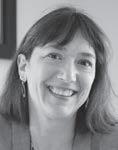
Robin Hutcheson MS’97 is now deputy administrator of the Federal Motor Carrier Safety Administration at the U.S. Department of Transportation. She was previously the department’s deputy assistant secretary for Safety Policy, coordinating safety efforts across multiple modes of transportation, including COVID response and recovery. She also led the development of the first National Roadway Safety Strategy for the U.S. Shawn Christensen BS’98 is the new president and CEO of the St. George Area Chamber of Commerce. Christensen was most recently director of Business Outreach and Community Engagement at World Trade Center
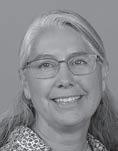
u Alumni News
’80s
’90s
Jill M. Pohlman
Gina Butters
Denise Dearing
Christy Hopkins
Diana Hagen
Monica Bertagnolli
Erik A. Christiansen
48 UNIVERSITY OF UTAH MAGAZINE
Robin Hutcheson
SPOTLIGHT
into administration. He was most recently principal at Kearns Junior High.

’00s
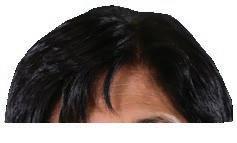
Keith Embray BA’92 MA’98 recently returned to the U in a dual capacity with the Division of Equity, Diversity, & Inclusion (EDI) and Department of Athletics. Embray is the first executive director of EDI Operations as well as associate athletics director for EDI and Student Belonging. He most recently served as Penn State University’s assistant A.D. for student-athlete welfare and development. In his new role, he will be responsible for infusing student belonging and EDI values throughout Athletics. He was previously an assistant A.D. at the University of Central Florida and an associate director for student-athlete welfare and development at the University of Notre Dame. He also spent more than a decade as a project manager in HR and management consulting, and taught undergraduate sociology courses and was a program coordinator for the federally funded McNair Scholars Program at Westminster College. In addition to his bachelor ’s in history and master’s in sociology from the U, he holds an MBA from Westminster. In Embray’s senior season with Utah Football, he was elected a team captain and voted the team ’s defensive MVP. He went on to play seven years of professional football in the Canadian Football League, Arena Football League, and National Football League, and spent three years as an on-air TV and radio personality and reporter.
Utah. He previously led teams at two different SaaS companies and worked in New York and Texas for Hearst Communications.
Scott Bell BS’99 MEd’04 is the new principal at West Lake STEM Junior High School in West Valley City, UT. A city native, Bell began his academic career as a West Lake school counselor and alternative school teacher before moving
Rae Meadows MFA’00 has published her fifth novel, Winterland, in which an 8-yearold from Siberia gets the nod to train with elite athletes in the U.S.S.R. in 1973. Meadows grew up admiring the Soviet gymnasts of the 1970s and in her forties decided to go back to the thing she loved as a child. She is the author of four previous novels, including the award-winning I Will Send Rain, which depicts an Oklahoma family struggling as Dust Bowl storms descend on their farm in 1934.
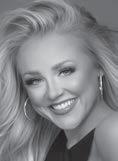
Holly Rowe BA’04 discussed her journey from The Daily Utah Chronicle to local news to ESPN as the keynote speaker at the U’s Career & Professional Development Center Career Fair on campus this past fall. Rowe has spent more than 25 years covering everything from softball to gymnastics—but especially, college football—for the ESPN sports television network.

Ben Hart BS’05 MS’08 is the new executive director of the Utah Inland Port Authority. Hart is an adjunct professor at the U, where he teaches urban and regional economics courses. With more than 15 years of government administrative experience, he had previously served as deputy director of the Utah Governor’s Office of Economic Opportunity. ’10s
Razvan Ungureanu JD’10 was elected to the American Law Institute, an independent group that works to simplify and modernize the law. A partner with Smyser Kaplan & Veselka, Ungureanu's practice focuses on civil litigation and appeals. He is also an adjunct professor of law at the University of Houston Law Center, where he teaches Complex Litigation and Conflict of Laws. A native of Romania, Ungureanu is also an avid chess player and has competed in the World Chess Open.
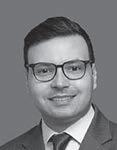
Dustin Gramoll BS’11 is the new president of North Salt Lake-based Gramoll Construction, which focuses on commercial and institutional projects. The firm’s third generation of leadership, Gramoll has been with the firm since 2003, filling every role from cleanup to estimating, and site superintendent to project management.
Christian Clarke BFA’16 and his wife, Clara, have created a vibrant arts space in a once-empty storefront on the University of Chicago campus, where he now works as a resident head. Southspace, their independent art gallery, provides a new place where students, staff, and community members can share art.
self as a pair of rhyming pirates) and directed by Alexandra Harbold, assistant professor in the U’s Actor Training Program. It was produced by Johnson and Lind’s new Footpath Theatre Company, founded, Johnson says, as “a locus point for U theater grads in New York to collaborate and create work.”
Alexa Knutzen
’20sHarrison Lind BFA’20 and Connor Nelis Johnson BFA’21 premiered a new play in Brooklyn, NY, as part of Marooned!, a series of short plays set on desert islands presented by the nonprofit spit&vigor theater company. The Wreck of Queen Thomasina was written by Johnson (co-starring Lind and him-
SPOTLIGHT
BFA’21 of Mapleton, UT, is the first national Miss Volunteer America, receiving a $50,000 scholarship and the chance to meet with Creative Artists Agency Nashville, Big Machine Label Group, and other movers. With the motto “Volunteers working to educate and inspire our next generation of volunteers,” the new program seeks to empower young women across the country through educational scholarships and extraordinary opportunities.
What’s up with U?
Send updates to classnotes@utah.edu
Luz Gamarra MSW’09 was named USA Today’s 2022 Woman of the Year for Utah. One woman from each state was chosen for her significant positive impact on her community. As lead academic advisor for Humanities and English-as-a-secondlanguage students at Salt Lake Community College, Gamarra helps immigrants and ESL students get into college, then connects them with peer mentors (in two programs she created), working to help students stay motivated and thrive. Gamarra had worked as a prosecutor for over seven years in Peru, where she obtained master’s and doctoral degrees in law and political science, when she immigrated to Utah in 2004 and found that she would need to essentially start over. “It was very hard in the beginning. But I said to myself, I will achieve, and when it is over, I will help others to find the resources they need to achieve,” Gamarra says. She serves on the boards of several other area organizations supporting education efforts and has previously been recognized for her work with honors including the Peruvian Congress award. Gamarra’s daughter Elizabeth BSW’16 MSW’17 became one of her first peer mentors before graduating from SLCC in 2014 (at age 16) and going on to be a Fulbright Scholar and TEDx speaker, among other achievements.

Alumni News u
Razvan Ungureanu
Alexa Knutzen
WINTER 2023 49
Holly Rowe

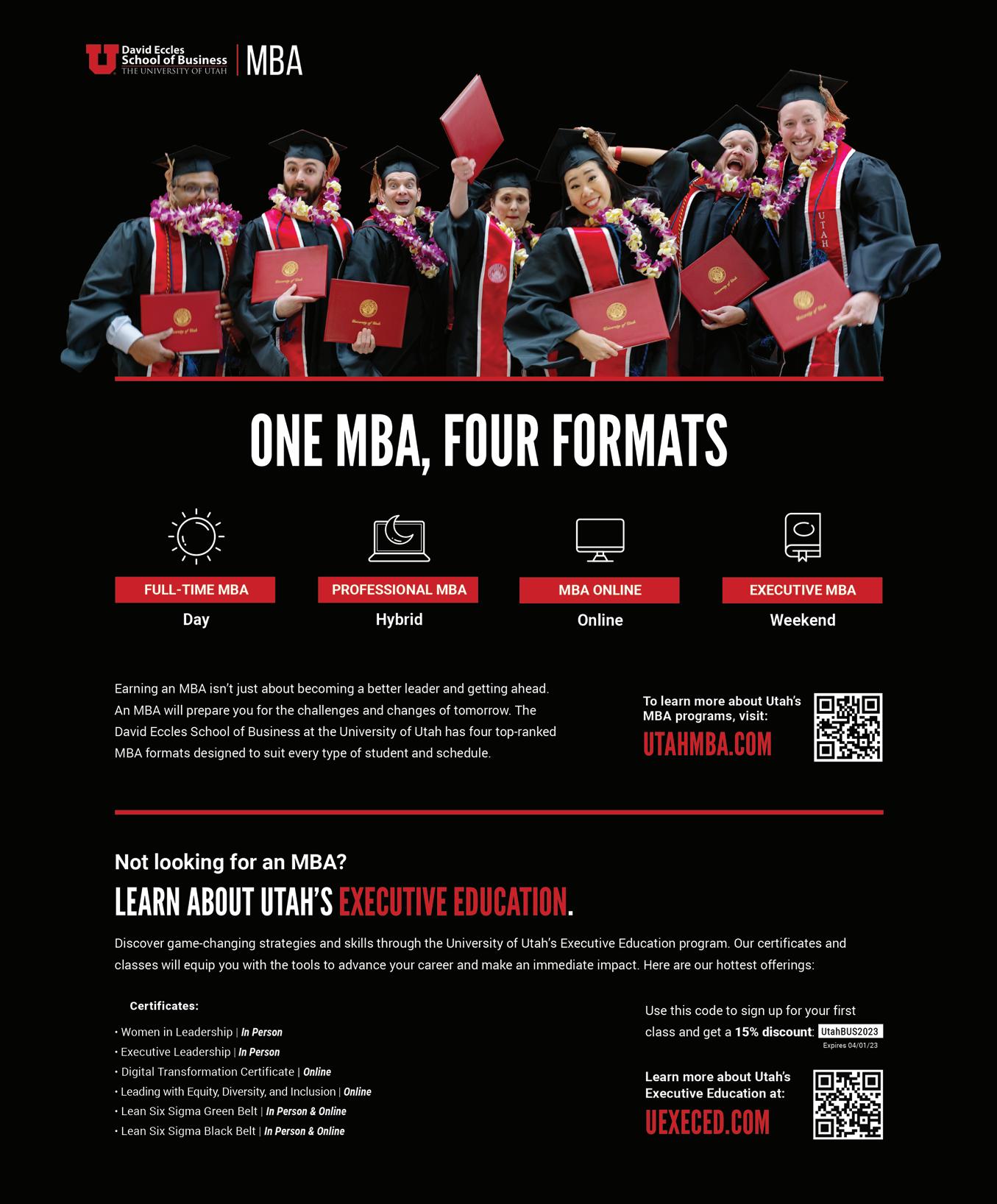
100 Years of Primary Children’s
Primary Children’s Hospital began in 1922 at a Salt Lake City home. By 1952, it had moved to a new building, and in 1977, Primary Children’s and the U signed an agreement to formally establish the hospital as the School of Medicine’s pediatric training site. This allowed more medical specialties to be offered. Today Primary Children’s is jointly affiliated with Intermountain Healthcare and is located on the U campus. It has hundreds of beds, a staff of 3,000, and more than 800 providers—670 of whom are U faculty.
This picture from the 1930s shows Primary Children’s in its humble beginnings at the original location, with children and caregivers gathered around the radio.
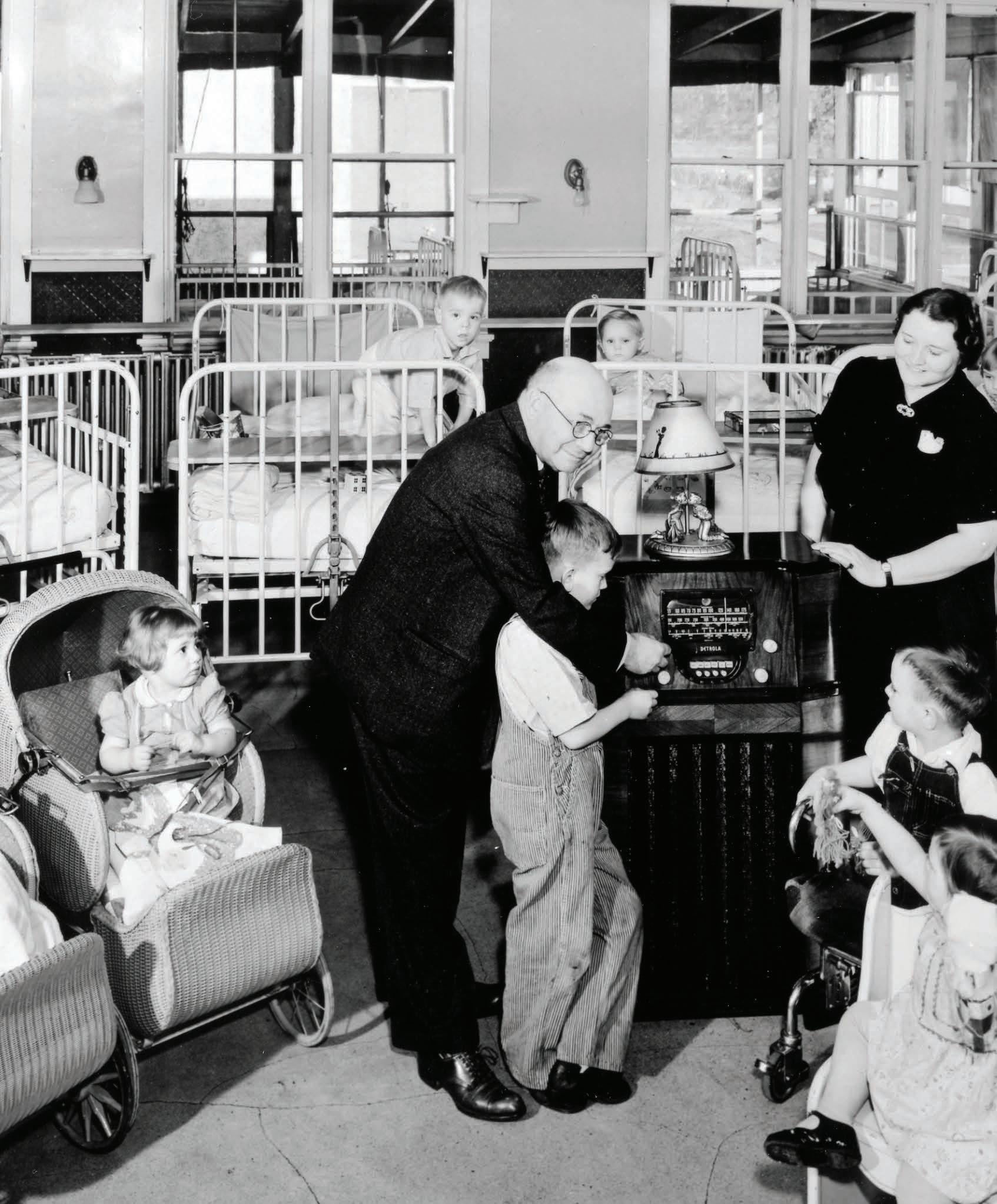
PHOTO COURTESY OF INTERMOUNTAIN HEALTHCARE 52 UNIVERSITY OF UTAH MAGAZINE
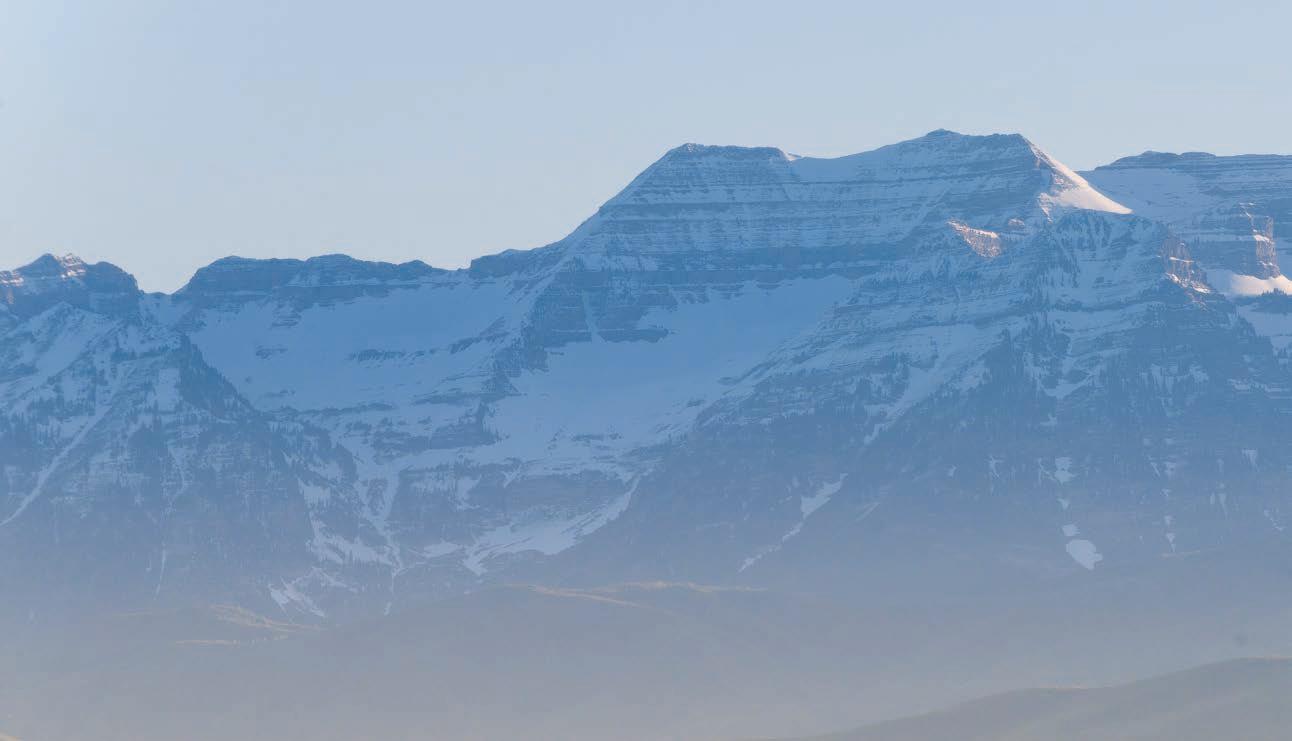


Home is tranquil, serenely tucked within the magnificent Rocky Mountains, minutes from Park City and Deer Valley Resort in Utah. Home is exhilarating outdoor adventures inspired by the possibility of each season. Home is a legacy built on a deep-rooted desire to share the authentic beauty of land passed down through generations – blurring the balance between nature and sophistication. Home is where your legacy begins. HOME IS RED LEDGES. WELCOME HOME. CUSTOM RESIDENCES AND HOMESITES | $1.2 - $10M+ WELLNESS | SKI | GOLF | TENNIS | DINING | EQUESTRIAN redledges.com | 877.733.5334 THE LAND THE LUXURY THE Berkshire Hathaway | Utah Properties Disclaimer: Obtain the Property Report required by Federal law and read it before signing anything. No Federal agency has judged the merits or value, if any, of this property. All recreational facilities are privately owned and operated as a club with mandatory membership fees. This does not constitute an offer to sell or a solicitation of an offer to buy in Ohio or in any other jurisdiction in which registration or any other legal requirements have not been fulfilled. ©2023 Red Ledges Land Development, Inc. ©2023 BHH Affiliates, LLC. An independently owned and operated franchise of BHH Affiliates, LLC. Berkshire Hathaway HomeServices and the Berkshire Hathaway HomeServices symbol are registered service marks of Columbia Insurance Company, a Berkshire Hathaway affiliate. Equal Housing Opportunity. LEGACY

ALBION FIT PRSRT STD US POSTAGE PAID PORTLAND OR PERMIT No 2160 75 Fort Douglas Blvd. Salt Lake City, UT 84113










 NANCY CUNNINGHAM BSN’13, SANDY, UT
NANCY CUNNINGHAM BSN’13, SANDY, UT
 ROB NAHOOPII MS’08 PHARMD’06 DRAPER, UT
ROB NAHOOPII MS’08 PHARMD’06 DRAPER, UT
































 By Seth Bracken
By Seth Bracken

































































